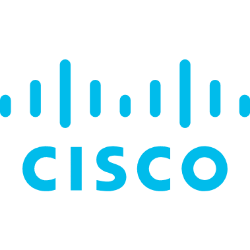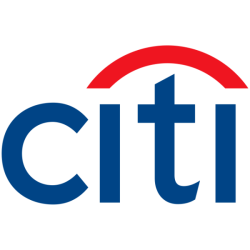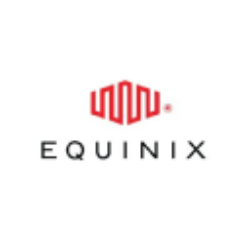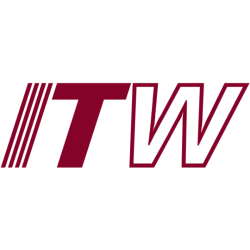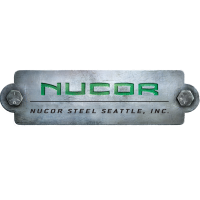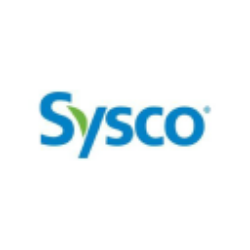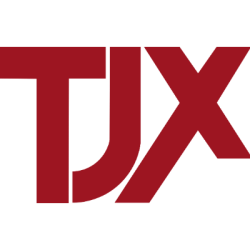Updated: June 7, 2025

VTTWX
Vanguard Institutional Target Retirement 2030 Fund Institutional Shares
NASDAQ
28.83
-0.24

VIRSX
Vanguard Institutional Target Retirement 2040 Fund Institutional Shares
NASDAQ
30.89
-0.36

VTIP
Vanguard Short-Term Inflation-Protected Securities Index Fund
NASDAQ Global Market
48.87
0.01
We have not found the stock you are looking for
Ticker
Loading
Market Cap
Loading
Revenue
Loading
EPS
Loading
PE Ratio
Loading
Volume
Loading
Dividend
Loading
Week Range
Loading
Beta
Loading
Frameworks
Name
Score
Company Overview
Loading
Cisco Systems, Inc.
Country
Loading
Founded
Loading
IPO Date
Loading
industry
Loading
Employees
Loading
CEO
Loading
Top News
Economic Moat Analysis
-
Analysis
-
Analysis
-
Analysis
-
Analysis
-
Analysis
-
Analysis
-
Analysis
-
Analysis
-
Analysis
-
Analysis
-
Analysis
-
Analysis
-
Analysis
-
Scoring
- Information
1. 10Y Growth Analysis
Score: 8.0 (Strong)
Cisco's overall score reflects its strong position in the tech industry, driven by its adaptability, innovation, and strategic initiatives. The company’s steady growth prospects are supported by its focus on digital transformation, strategic alliances, and sustainability efforts. Its long-term investments in emerging technologies such as AI, 5G, and edge computing position it well for future opportunities.
2. Scenario Analysis
Score: 7.5 (Strong)
Cisco demonstrates a resilient strategic position across most scenarios due to its strong market presence, diversified product portfolio, and commitment to innovation. While it faces challenges in the stress scenario, its ability to adapt and respond strategically suggests a positive outlook. Score without stress scenario: 7.8 – Resilient
3. Risk & Opportunities
Score: 7.0 (Strong)
Cisco exhibits a balanced mix of risks and opportunities, with significant growth potential in emerging markets and technological advancements. However, challenges such as market competition and supply chain vulnerabilities require strategic management.
4. Economic Moat
Score: 8.2 (Strong)
Cisco exhibits strong competitive advantages across multiple dimensions, notably in switching costs and network effects, contributing to a robust economic moat. The company’s ability to maintain high switching costs and capitalize on network effects ensures its market leadership and sustainability.
5. Business Model
Score: 8.0 (Strong)
Cisco’s business model is strong, characterized by a robust value proposition, diverse customer segments, and effective revenue streams. The company’s strategic investments in R&D, comprehensive service offerings, and global presence position it well in the competitive tech landscape. However, ongoing adaptation to industry changes, such as the shift towards software and cloud solutions, remains crucial.
6. Management Analysis
Score: 8.4 (Strong)
Cisco demonstrates competent leadership with a strong track record of strategic execution and operational efficiency. The management team is well-positioned to drive the company’s growth through innovation and strategic acquisitions. Leadership stability and a clear strategic direction further enhance investor confidence.
7. BCG Matrix
Score: 7.2 (Strong)
Cisco's overall performance reflects a strong market position with its core products, particularly in networking and collaboration solutions. However, challenges remain in newer high-growth areas like cloud services and IoT, where market share is yet to be established.
8. SWOT Analysis
Score: 6.6 (Balanced)
Cisco's strengths in brand recognition, financial health, and innovation position it well, but challenges such as hardware dependence and regulatory complexities balance these positives. Opportunities in cloud, cybersecurity, and IoT provide growth potential, while threats like cybersecurity risks and economic uncertainties require strategic vigilance.
9. Porter's 5 Forces
Score: 5.9 (Balanced)
Cisco experiences moderate impacts from most competitive forces. The company's strong market position, technological innovation, and brand loyalty provide a competitive edge, but it faces challenges from supplier dependencies and industry rivalry.
10. PESTLE Analysis
Score: 7.1 (Strong)
The overall score reflects a generally positive impact of the macro-environmental factors on Cisco, with significant strengths in technological advancements and economic conditions. While there are challenges, particularly in political and legal areas, the company's proactive strategies in technology and sustainability position it well for continued growth.
11. ESG Analysis
Score: 8.0 (Strong)
Cisco's overall ESG performance is strong, reflecting its commitment to sustainable and ethical business practices. The company excels in environmental initiatives and governance, with a solid performance in social factors. Continuous improvements in these areas are likely to enhance its ESG standing further.
12. Company Milestones
Score: 7.7 (Strong)
No summary available.
Final Overall Score
Score: 7.6 (Strong)
The Final Overall Score of 7.6 for Cisco Systems, Inc. (stock symbol: CSCO) indicates a strong performance and positive outlook for the company. This score suggests that Cisco is currently performing well across multiple evaluation frameworks, which may include financial health, market position, growth potential, and investor sentiment. ### General Performance: Cisco’s strong score reflects its consistent revenue generation and profitability. The company is likely benefiting from its robust position in the networking and communication equipment industry, leveraging its extensive portfolio of products and services that cater to various sectors including cloud computing, cybersecurity, and Internet of Things (IoT). ### Strengths: 1. **Market Leadership**: Cisco is a leader in networking equipment, which provides a competitive edge and pricing power. 2. **Diversified Product Range**: The company offers a wide range of products and solutions, reducing dependency on any single product line. 3. **Innovation and R&D**: Continuous investment in research and development helps Cisco stay ahead of technological trends and maintain its competitive advantage. 4. **Strong Financials**: Cisco typically displays strong financial metrics, including healthy profit margins, robust cash flow, and manageable debt levels. ### Outlook: The positive score suggests confidence in Cisco’s future prospects. This outlook may be supported by anticipated growth in network infrastructure demand, increased adoption of remote work technologies, and expansion into new markets such as 5G and IoT. Additionally, strategic acquisitions and partnerships could further enhance its market position and drive future growth. Overall, the score of 7.6 reflects a positive assessment of Cisco’s current performance and future potential, making it an attractive consideration for investors.
Future Outlook
To provide a future outlook for Cisco Systems, Inc. (CSCO), it’s important to consider various factors that typically influence stock performance, including market trends, company fundamentals, industry performance, and macroeconomic conditions. Here’s a general overview: 1. **Industry Trends**: Cisco is a leader in networking and communications technology, a sector that continues to benefit from digital transformation, cloud computing, and increased demand for cybersecurity solutions. The ongoing expansion of 5G networks and IoT devices also presents growth opportunities for Cisco. 2. **Financial Performance**: Cisco’s financial health, including revenue growth, profit margins, and cash flow, is critical. Historically, Cisco has maintained strong financials with substantial cash reserves and a track record of consistent dividend payments, appealing to income-focused investors. 3. **Innovation and Strategy**: Cisco’s strategic investments in software, security, and subscription-based services are key to its long-term growth. The company’s ability to innovate and adapt to technological changes will likely influence its future performance. 4. **Economic Factors**: Broader economic conditions, such as interest rates, inflation, and global supply chain issues, could impact Cisco’s operations and stock performance. As a global company, currency fluctuations and international trade policies are also relevant. 5. **Market Sentiment**: Investor sentiment and market dynamics, including the tech sector’s performance and broader stock market trends, can affect Cisco’s stock price. Analyst ratings and institutional investor activity are also indicators of market sentiment. Given these considerations, the future outlook for CSCO appears cautiously optimistic, driven by its strong market position, ongoing demand for networking and security solutions, and strategic focus on innovation and growth. However, potential risks from economic uncertainties and competitive pressures should be monitored. As always, investors should conduct their own research and consider their risk tolerance before making investment decisions.
3-Year Growth Prospects
Score: 7.5 – Steady
– Digital Transformation Initiatives: Cisco’s ongoing investments in cloud, AI, and IoT are expected to drive short-term growth.
Example: *Cisco’s acquisition of ThousandEyes enhances its cloud analytics capabilities, providing customers with better visibility and insights.*
– Strong Demand for Networking Solutions: Increasing demand for robust network infrastructure supports growth.
Example: *The shift to hybrid work models is driving demand for Cisco’s collaboration and networking solutions.*
– Focus on Cybersecurity: Enhancements in cybersecurity offerings cater to growing security needs.
Example: *Cisco’s SecureX platform integrates security across networks, endpoints, and the cloud, appealing to enterprise customers.*
– Recurring Revenue Model: Transition to a software and services model provides stable revenue streams.
Example: *Cisco’s subscription-based offerings, such as Webex and security solutions, contribute to predictable revenue.*
– Market Expansion in Emerging Economies: Efforts to penetrate emerging markets show potential for growth.
Example: *Cisco’s initiatives in India and Africa focus on digital infrastructure development, tapping into new customer bases.*
5-Year Growth Prospects
Score: 8.0 – Steady
– Innovation in 5G and Edge Computing: Strategic investments in 5G and edge computing position Cisco as a leader in next-gen connectivity.
Example: *Partnerships with telecom providers for 5G infrastructure deployment demonstrate Cisco’s commitment to innovation.*
– Sustainability and Green Initiatives: Emphasis on sustainable practices aligns with global trends.
Example: *Cisco’s goal to achieve net zero emissions by 2040 resonates with environmentally conscious investors.*
– Strategic Alliances and Partnerships: Collaborations with tech firms enhance product offerings and market reach.
Example: *Cisco’s partnership with Microsoft integrates its security solutions with Azure, expanding its cloud presence.*
– Expansion of SaaS Offerings: Growing software portfolio boosts Cisco’s competitive edge in the market.
Example: *The acquisition of IMImobile strengthens Cisco’s capabilities in customer experience and engagement solutions.*
– R&D Investments: Continuous investment in R&D fosters innovation and long-term growth.
Example: *Cisco’s increased R&D spending in AI-driven networking solutions positions it for future technological leadership.*
10-Year Growth Prospects
Score: 8.5 – Steady
– Leadership in Network Infrastructure: Long-term dominance in network infrastructure underpins sustained growth.
Example: *Cisco’s role as a key player in global internet backbone infrastructure ensures continued relevance.*
– Advancements in AI and Automation: Pioneering AI and automation technologies drive future efficiencies.
Example: *Cisco’s AI-driven intent-based networking automates and optimizes network operations.*
– Global Digitalization Trends: Alignment with global digitalization initiatives enhances growth potential.
Example: *Cisco’s involvement in smart city projects globally showcases its commitment to digital transformation.*
– Adaptability to Technological Shifts: Proven ability to adapt to new tech trends secures long-term success.
Example: *Cisco’s shift from hardware-focused to software-centric solutions highlights its adaptability.*
– Commitment to Diversity and Talent Development: Focus on diverse talent acquisition supports innovation.
Example: *Cisco’s programs to foster diversity and inclusion cultivate a dynamic and innovative workforce.*
Overall Score: 8/10
Cisco’s overall score reflects its strong position in the tech industry, driven by its adaptability, innovation, and strategic initiatives. The company’s steady growth prospects are supported by its focus on digital transformation, strategic alliances, and sustainability efforts. Its long-term investments in emerging technologies such as AI, 5G, and edge computing position it well for future opportunities.
Future Outlook
Cisco’s future outlook is promising, with a robust strategy that aligns with global digitalization and sustainability trends. The company’s focus on innovation in networking and cybersecurity, coupled with its transition to a software-driven model, provides a solid foundation for continued growth. As Cisco strengthens its presence in emerging markets and invests in cutting-edge technologies, it is well-positioned to capitalize on new opportunities and remain a leader in the evolving tech landscape.
Scenario Analysis for CSCO (Cisco Systems, Inc.)
Scenario 1: Economic Downturn
Score: 7.5 – Resilient
– Reduced consumer spending: Cisco’s diverse customer base and essential networking products help mitigate the impact of decreased consumer spending.
Example: *During the 2020 pandemic, Cisco’s revenues in security and cloud services remained stable.*
– Supply chain disruptions: Established supplier relationships and a global production network allow Cisco to adapt more effectively to supply chain challenges.
Example: *Cisco’s strategy to diversify its manufacturing across multiple regions has limited the impact of specific geopolitical tensions.*
– Lower investment in infrastructure: While overall infrastructure spending may decrease, Cisco’s focus on digital transformation can drive demand for its products.
Example: *The shift to remote work increased the demand for Cisco’s WebEx and security solutions.*
– Increased competition for limited resources: Cisco’s strong market position and innovation capacity help it secure necessary resources even amid high competition.
Example: *Cisco’s investment in new technologies like silicon photonics gives it a competitive edge in the tech resource market.*
– Pressure on stock prices: Cisco’s consistent dividend payout and stock buyback programs provide some stability to its stock price during downturns.
Example: *Cisco maintained its dividend growth during the 2008 financial crisis.*
Scenario 2: Technological Disruption
Score: 8.0 – Resilient
– Advancements in battery technology: Cisco’s investment in IoT and smart grid technology positions it well to leverage advancements in energy efficiency.
Example: *Cisco’s collaboration with energy companies to develop smart grid solutions.*
– Autonomous driving technology: While not directly involved in automotive, Cisco’s networking solutions support the infrastructure needed for autonomous vehicles.
Example: *Cisco’s partnership with auto manufacturers to provide network solutions for vehicle-to-infrastructure communication.*
– Energy storage solutions: Cisco’s data center operations benefit from advancements in energy storage technology, improving efficiency.
Example: *Cisco’s use of more efficient energy solutions in its data centers to reduce operational costs.*
– Integration of AI and machine learning: Cisco’s integration of AI in its security and network management products enhances its competitive position.
Example: *The acquisition of AI companies like Accompany to bolster its AI capabilities.*
– Expansion into new tech domains: Cisco’s ventures into AI, security, and IoT reflect its strategy to diversify and innovate.
Example: *Cisco’s acquisition of AppDynamics to enhance its monitoring and analytics capabilities.*
Scenario 3: Regulatory Changes
Score: 7.8 – Resilient
– Stringent emissions standards: Cisco’s initiatives in reducing its carbon footprint align well with increasing regulatory demands.
Example: *Cisco’s commitment to achieving net-zero emissions by 2040.*
– Government incentives: Cisco benefits from government incentives for digital infrastructure and cybersecurity enhancement.
Example: *Government grants for developing secure networking solutions bolster Cisco’s market opportunities.*
– Changes in trade policies: Cisco’s global presence and diversified manufacturing reduce its vulnerability to trade policy shifts.
Example: *Cisco’s ability to shift production to different regions in response to tariff changes.*
– Safety and data regulations: Cisco’s strong focus on cybersecurity positions it to meet stringent data protection regulations.
Example: *Cisco’s development of secure networking products compliant with GDPR.*
– Support for renewable energy: Cisco’s investment in energy-efficient technologies aligns with regulatory support for renewables.
Example: *Cisco’s partnership with renewable energy firms to integrate IoT solutions for energy management.*
Scenario 4: Market Expansion
Score: 8.5 – Resilient
– Emerging markets: Cisco’s expansion strategies in emerging markets capitalize on increasing digital infrastructure demand.
Example: *Cisco’s projects in India and Africa to provide networking solutions for growing markets.*
– Increased urbanization: Urbanization drives demand for Cisco’s networking solutions and smart city technologies.
Example: *Cisco’s involvement in smart city projects in Asia and Latin America.*
– Rising environmental awareness: Cisco’s sustainable products attract environmentally conscious consumers and businesses.
Example: *Cisco’s marketing of energy-efficient switches and routers.*
– Expansion of product portfolio: Cisco’s continuous innovation and product diversification enhance market opportunities.
Example: *Introduction of new security and cloud solutions to meet evolving customer needs.*
– Strategic partnerships: Cisco’s alliances with tech giants and startups strengthen its market position.
Example: *Cisco’s collaboration with Microsoft on cloud solutions.*
Scenario 5: Competitive Pressure
Score: 7.2 – Resilient
– Increased EV competition: While not directly in EVs, Cisco’s tech solutions for automotive networks are crucial.
Example: *Cisco’s partnerships with automotive OEMs for connected vehicle technology.*
– Technological advancements by competitors: Cisco’s R&D investments ensure it remains competitive against tech advancements.
Example: *Continuous updates to Cisco’s Meraki solutions in response to competitive offerings.*
– Pricing pressure: Cisco’s brand strength allows it to maintain pricing power despite competitive pressures.
Example: *Cisco’s focus on value-added services to differentiate from low-cost competitors.*
– Brand loyalty challenges: Cisco’s reputation for reliability sustains its customer base against competitors.
Example: *Long-term contracts with enterprise clients bolster Cisco’s brand loyalty.*
– Supply chain competition: Cisco’s strategic sourcing and supplier management mitigate competitive supply chain risks.
Example: *Cisco’s proactive management of semiconductor shortages to maintain supply.*
Scenario 6: Stress Scenario
Score: 6.5 – Mixed
– Severe economic recession: Cisco’s critical role in IT infrastructure provides some stability, but discretionary spending cuts can affect revenues.
Example: *IT budget cuts during economic downturns may delay new Cisco deployments.*
– Major technological disruptions: Cisco’s agility in adopting new technologies helps, though rapid changes could challenge adaptation.
Example: *Rapid shifts to cloud solutions requiring swift Cisco responses.*
– Extreme regulatory changes: Cisco’s compliance capabilities are robust, yet drastic regulatory shifts can pose adaptation challenges.
Example: *Sudden changes in international data transfer laws impacting Cisco’s global operations.*
– Significant market contraction: Cisco’s market diversity offers some protection, though a broad contraction impacts overall growth.
Example: *Global economic slowdowns reducing enterprise IT expenditures.*
– Intense competitive landscape: Cisco’s brand and innovation help, but aggressive competitor tactics can pressure market share.
Example: *Competitors offering lower-cost solutions in emerging economies.*
Overall Score: 7.5/10
Cisco demonstrates a resilient strategic position across most scenarios due to its strong market presence, diversified product portfolio, and commitment to innovation. While it faces challenges in the stress scenario, its ability to adapt and respond strategically suggests a positive outlook.
Score without stress scenario: 7.8 – Resilient
Future Outlook
Cisco is well-positioned to navigate a variety of future scenarios due to its robust infrastructure, innovation capacity, and strategic partnerships. While facing potential disruptions and competitive pressures, its proactive strategies and market diversification provide a solid foundation for continued growth and resilience. As the global emphasis on digital transformation and cybersecurity intensifies, Cisco’s focus on these areas will likely enhance its strategic positioning further.
Risks
Score: 5.8 – Moderate
– Supply Chain Vulnerabilities: Cisco’s reliance on global supply chains makes it susceptible to disruptions caused by geopolitical tensions and natural disasters.
Example: *The semiconductor shortage in 2021 led to significant delays in Cisco’s hardware production and delivery.*
– Market Competition: The intense competition from rivals like Juniper Networks and Huawei can impact Cisco’s market share and pricing power.
Example: *Huawei’s aggressive pricing strategy in the Asia-Pacific region has put pressure on Cisco’s sales.*
– Regulatory Challenges: Changes in international trade policies and regulations can affect Cisco’s operations and profitability.
Example: *The U.S. restrictions on exports to certain countries have limited Cisco’s market access.*
– Technological Obsolescence: Rapid technological advancements require continuous innovation, which can strain resources.
Example: *The shift to cloud-based solutions has forced Cisco to invest heavily in R&D to remain competitive.*
– Currency Fluctuations: As a multinational corporation, Cisco’s revenue is vulnerable to exchange rate fluctuations.
Example: *The strong U.S. dollar in recent years has negatively impacted Cisco’s international revenue.*
Opportunities
Score: 8.2 – Strong
– Expansion in Emerging Markets: Growing demand for digital infrastructure in emerging markets presents a significant growth opportunity.
Example: *Cisco’s investment in India and other Southeast Asian countries has resulted in increased market penetration.*
– Growth in Cloud Services: The increasing adoption of cloud computing offers opportunities for Cisco to expand its software and services portfolio.
Example: *Cisco’s acquisition of AppDynamics has bolstered its cloud capabilities.*
– 5G Network Deployment: The global rollout of 5G networks can drive demand for Cisco’s networking equipment and related services.
Example: *Partnerships with telecom operators for 5G infrastructure development have opened new revenue streams.*
– Focus on Cybersecurity: Rising cyber threats have increased demand for robust security solutions, benefiting Cisco’s security segment.
Example: *Cisco’s acquisition of Duo Security has enhanced its cybersecurity offerings.*
– Sustainability Initiatives: Commitment to sustainability and energy-efficient technologies can enhance Cisco’s brand image and customer loyalty.
Example: *Cisco’s pledge to reach net-zero emissions by 2040 aligns with growing consumer and regulatory demands for sustainability.*
Overall Score: 7.0/10
Cisco exhibits a balanced mix of risks and opportunities, with significant growth potential in emerging markets and technological advancements. However, challenges such as market competition and supply chain vulnerabilities require strategic management.
Future Outlook
Cisco’s strategic investments in emerging markets and cutting-edge technologies position it well for future growth. The company’s focus on cloud services, cybersecurity, and 5G networks aligns with industry trends, offering substantial revenue opportunities. However, it must navigate risks like intense competition and regulatory changes to maintain its market leadership. Continued innovation and strategic partnerships will be crucial to capitalize on these opportunities and mitigate risks, ensuring sustainable growth in the long term.
Economic Moat Analysis: Cisco Systems, Inc. (CSCO)
Cost Advantages
Score: 7.5 – Strong
– Economies of Scale: Cisco’s large-scale operations allow it to benefit from lower per-unit costs, enhancing its ability to price competitively.
*Example: Cisco’s extensive global supply chain and production facilities reduce costs compared to smaller competitors.*
– Vertical Integration: Integration across multiple stages of production and distribution helps minimize costs.
*Example: Cisco’s acquisition of component manufacturers helps streamline operations and reduce reliance on third-party suppliers.*
– R&D Investment: Significant investments in R&D lead to cost-efficient product development and innovation.
*Example: Cisco invests heavily in developing new technologies that lower production and operational costs.*
– Operational Efficiency: Continuous process improvements and automation result in reduced operational costs.
*Example: Implementation of AI-driven tools to optimize manufacturing and logistics operations.*
– Global Sourcing: Access to diverse markets and suppliers allows Cisco to source materials at competitive prices.
*Example: Strategic partnerships with international suppliers to secure cost-effective raw materials.*
Network Effects
Score: 8.0 – Strong
– Extensive Product Ecosystem: A wide range of interconnected products enhances user dependency and network value.
*Example: Cisco’s networking products, such as routers and switches, create a comprehensive ecosystem for businesses.*
– Large Customer Base: A growing number of users increases the value of Cisco’s network, attracting more users.
*Example: Over 85% of Fortune 500 companies use Cisco’s solutions, amplifying its network effects.*
– Interoperability: Products designed for seamless integration with existing systems increase customer loyalty.
*Example: Cisco platforms that easily integrate with third-party applications, enhancing network utility.*
– Partner Networks: A vast network of partners and resellers extends Cisco’s reach and strengthens network effects.
*Example: Collaborations with global tech firms broaden Cisco’s market penetration.*
– Community and Support: A strong user community and support network enhance the overall value of Cisco’s offerings.
*Example: Cisco’s developer and user forums provide shared resources and support, boosting network stickiness.*
Intangible Assets
Score: 8.5 – Strong
– Brand Reputation: Cisco is renowned for quality and reliability, commanding customer trust.
*Example: Consistently ranked as a top brand in networking technology.*
– Patents and IP: A robust portfolio of patents protects technological advancements and market position.
*Example: Cisco holds thousands of patents across various networking technologies.*
– Proprietary Technologies: Unique technologies offer differentiation and market advantage.
*Example: Cisco’s proprietary networking protocols improve performance and security.*
– Industry Certifications: Recognized industry standards and certifications enhance Cisco’s credibility.
*Example: Cisco certifications for IT professionals are highly valued, reinforcing brand strength.*
– Research and Development: Continuous innovation bolsters Cisco’s competitive edge and market leadership.
*Example: Cisco invests heavily in developing next-gen networking solutions.*
Switching Costs
Score: 9.0 – Wide
– Integration Complexity: High complexity of Cisco’s systems makes switching costly and time-consuming for customers.
*Example: Large enterprises face significant downtime and retraining costs when switching from Cisco.*
– Customized Solutions: Tailored solutions for businesses increase dependency and switching barriers.
*Example: Customized network solutions that integrate with specific business needs are costly to replace.*
– Training and Certification: High investment in Cisco-specific training creates a knowledge dependency.
*Example: Companies with certified Cisco professionals are less likely to switch due to retraining costs.*
– Long-term Contracts: Multi-year contracts lock in customers, discouraging short-term switching.
*Example: Cisco’s enterprise agreements often include long-term service commitments.*
– Ecosystem Lock-in: Extensive use of Cisco products creates a dependency on their ecosystem.
*Example: Customers using a suite of Cisco products face higher costs to switch to competitors.*
Efficient Scale
Score: 7.8 – Strong
– Market Leadership: Dominance in key segments allows efficient scaling and market influence.
*Example: Cisco’s leadership in enterprise networking drives economies of scale.*
– Global Reach: Presence in diverse markets allows efficient resource allocation and scaling opportunities.
*Example: Operations in over 100 countries provide global scalability.*
– Strategic Acquisitions: Acquisitions expand capabilities and scale, enhancing competitive position.
*Example: Acquisitions like Acacia Communications bolster Cisco’s scale in optical networking.*
– Advanced Supply Chain: An optimized supply chain supports scalable growth and market responsiveness.
*Example: Cisco’s supply chain innovations enable rapid scaling to meet demand.*
– Collaborative Platforms: Platforms that allow integration with third-party services enhance scale efficiency.
*Example: Cisco’s Webex platform integrates with various business applications, enhancing user scalability.*
Overall Score: 8.2/10
Cisco exhibits strong competitive advantages across multiple dimensions, notably in switching costs and network effects, contributing to a robust economic moat. The company’s ability to maintain high switching costs and capitalize on network effects ensures its market leadership and sustainability.
Future Outlook
Cisco’s future outlook remains positive, with its strong economic moat positioning it well in the competitive landscape. The company is likely to continue leveraging its strengths in switching costs and network effects to maintain market dominance. Continued investments in R&D and strategic acquisitions will further solidify its position. The growing demand for networking solutions, driven by digital transformation and cloud adoption, presents significant growth opportunities for Cisco. As Cisco continues to innovate and expand its ecosystem, it should sustain its competitive edge and drive long-term shareholder value.
Value Proposition
Score: 8.5 – Strong
– Innovative Product Portfolio: Cisco offers a wide range of high-tech networking and cybersecurity products that cater to both small and large enterprises, ensuring a broad market reach.
– Strong Brand Reputation: Known for reliability and quality, Cisco’s brand commands trust across various industries, providing a competitive advantage.
– Comprehensive Service Offerings: Cisco provides end-to-end solutions, from hardware to software and services, meeting diverse customer needs.
– Commitment to Sustainability: Cisco’s focus on sustainable practices enhances its appeal to environmentally conscious customers.
– Scalability and Flexibility: Cisco’s solutions are designed to scale, making them attractive to growing businesses.
Customer Segments
Score: 8.0 – Strong
– Diverse Industry Reach: Serving multiple industries including healthcare, finance, and education, Cisco has a wide customer base.
– Global Presence: Cisco operates worldwide, catering to international markets and reducing dependency on any single region.
– Enterprise and SME Focus: While traditionally strong in the enterprise sector, Cisco is increasingly targeting SMEs with tailored solutions.
– Public Sector Engagement: Significant involvement with government contracts enhances Cisco’s stability and growth potential.
– Technologically Advanced Clients: Focus on clients needing advanced technology solutions positions Cisco well in the market.
Revenue Streams
Score: 7.5 – Strong
– Hardware Sales: Core revenue from networking hardware remains robust, despite industry shifts.
– Software and Subscription Services: Rapid growth in recurring revenue from software and subscriptions signals a strategic pivot.
– Professional Services: Revenue from consulting and support services adds stability and diversity to income streams.
– Acquisition of Emerging Technologies: Strategic acquisitions bolster revenue by integrating new technologies.
– Geographic Diversification: Revenue from diverse geographic locations mitigates regional economic risks.
Channels
Score: 7.0 – Strong
– Direct Sales Force: A large, capable sales force ensures strong customer relationships and direct feedback.
– Partner Ecosystem: Extensive network of resellers and partners expands reach and influence in the market.
– Online Platforms: Digital channels for sales and support improve efficiency and customer experience.
– Events and Conferences: Participation in industry events enhances brand visibility and customer engagement.
– Customized Solutions Delivery: Tailored solutions are delivered through specialized channels to meet specific customer needs.
Customer Relationships
Score: 8.2 – Strong
– Customer Support Excellence: Comprehensive support services foster strong long-term customer relationships.
– Loyalty Programs and Incentives: Programs designed to enhance customer loyalty and repeat business.
– Consultative Selling Approach: Engages customers in a collaborative manner to tailor solutions effectively.
– Feedback Mechanisms: Robust systems for customer feedback ensure continuous improvement and adaptation.
– Community Building: Strong focus on building a community around its products, adding value for users.
Key Activities
Score: 8.0 – Strong
– R&D Investment: Significant investment in R&D to maintain technological leadership and innovation.
– Strategic Acquisitions: Regular acquisitions of innovative startups to enhance product offerings and technology.
– Customer Engagement: Continuous interaction with customers to understand and anticipate their needs.
– Supply Chain Management: Efficient management of supply chain operations to optimize production and distribution.
– Sustainability Initiatives: Active efforts to incorporate sustainable practices into operations and product design.
Key Resources
Score: 8.5 – Strong
– Technological Expertise: Cisco’s workforce is highly skilled in networking and cybersecurity technologies.
– Brand Equity: Strong brand recognition provides a substantial competitive edge.
– Intellectual Property: Extensive portfolio of patents and proprietary technology secures market position.
– Global Infrastructure: Well-established global infrastructure supports operations and customer service.
– Financial Strength: Robust financial position enables strategic investments and acquisitions.
Key Partnerships
Score: 8.0 – Strong
– Industry Alliances: Partnerships with leading tech companies enhance innovation and market reach.
– Academic Collaborations: Engaging with academic institutions supports research and talent acquisition.
– Channel Partners: Strong relationships with resellers and distributors expand Cisco’s market footprint.
– Government Partnerships: Collaborations with government entities secure significant contracts and projects.
– Cloud Service Providers: Partnerships with leading cloud providers enhance Cisco’s cloud offerings.
Cost Structure
Score: 7.5 – Strong
– Operational Efficiency: Continuous efforts to streamline operations and reduce costs while maintaining quality.
– R&D Expenditure: Significant investment in R&D is essential for maintaining competitive advantage.
– Sales and Marketing Costs: Substantial investment in sales and marketing to sustain customer acquisition and retention.
– Manufacturing Costs: Efficient manufacturing processes help manage costs and maintain margins.
– Acquisition Costs: Strategic acquisitions require capital but are essential for growth and innovation.
Overall Score: 8.0/10
Cisco’s business model is strong, characterized by a robust value proposition, diverse customer segments, and effective revenue streams. The company’s strategic investments in R&D, comprehensive service offerings, and global presence position it well in the competitive tech landscape. However, ongoing adaptation to industry changes, such as the shift towards software and cloud solutions, remains crucial.
Future Outlook
Cisco is well-positioned to continue its leadership in the networking and cybersecurity sectors. The company’s strategic focus on software and subscription-based services is expected to drive future growth. Continued investment in R&D and strategic acquisitions will likely enhance its product portfolio and market reach. As the tech industry evolves, Cisco’s adaptability and strong customer relationships will be key to sustaining its competitive advantage.
Management Quality
Score: 8.3 Competent
– Strong Leadership Team: Cisco’s leadership team is experienced and has demonstrated effective decision-making capabilities.
Example: Under CEO Chuck Robbins, Cisco has seen substantial growth in its recurring revenue streams.
– Proven Track Record: The management team has successfully navigated several market transitions, maintaining competitiveness.
Example: The shift from hardware-centric to software-centric solutions has been well-managed.
– Commitment to Diversity: Cisco places a high emphasis on fostering an inclusive workforce, which enhances creativity and decision-making.
Example: The company ranks highly in diversity and inclusion indices.
– Stakeholder Engagement: Strong focus on engaging with various stakeholders to drive growth and innovation.
Example: Regular interactions with analysts and investors to communicate strategic priorities.
– Focus on Sustainability: Prioritizes sustainable business practices, which aligns with long-term strategic goals.
Example: Cisco has committed to achieving net-zero emissions by 2040.
Strategic Direction
Score: 7.9 Competent
– Clear Vision for the Future: Cisco has articulated a clear strategic vision focusing on security, collaboration, and cloud offerings.
Example: The recent acquisition of ThousandEyes enhances their network performance visibility.
– Expansion into New Markets: The company is actively pursuing opportunities in high-growth areas such as IoT and 5G.
Example: Strategic partnerships and acquisitions to strengthen its IoT portfolio.
– Strong M&A Strategy: Cisco’s acquisitions are strategically aligned with its core business and future growth areas.
Example: The acquisition of Acacia Communications to boost its optical networking capabilities.
– Investment in R&D: Significant investment in research and development to drive innovation.
Example: Over $6 billion spent annually on R&D to maintain technological leadership.
– Focus on Digital Transformation: Initiatives to accelerate digital transformation both internally and for customers are well underway.
Example: Development of new digital tools and platforms for enhanced customer experience.
Innovation and Adaptability
Score: 8.1 Competent
– Continuous Innovation: Cisco consistently rolls out new products and services to meet evolving customer needs.
Example: The introduction of Webex enhancements to improve remote work solutions.
– Adaptation to Market Changes: Demonstrated ability to pivot and adapt strategies in response to market dynamics.
Example: Rapid shift to provide comprehensive remote work solutions during the COVID-19 pandemic.
– Strategic Use of AI and Machine Learning: Leveraging AI and ML to improve product offerings and customer experiences.
Example: AI-driven analytics to enhance network security features.
– Open Ecosystem Approach: Encourages innovation through partnerships and collaborations with other tech firms.
Example: Collaborations with major cloud providers to enhance hybrid cloud solutions.
– Focus on Customer-Centric Solutions: Investing in technologies that directly address customer pain points and enhance satisfaction.
Example: Tailored solutions for specific industries, such as healthcare and education.
Operational Efficiency
Score: 8.5 Competent
– Robust Supply Chain Management: Effective management of supply chain challenges, minimizing disruptions.
Example: Strategic supplier partnerships to ensure continuity in chip supply.
– Cost Optimization Initiatives: Ongoing efforts to streamline operations and reduce costs without compromising quality.
Example: Implementation of automation and AI to increase operational efficiencies.
– Scalable Business Model: Business model allows for scalability, supporting both organic and inorganic growth.
Example: Cloud-based solutions enable rapid scaling to meet customer demand.
– Effective Risk Management: Comprehensive risk management framework to mitigate operational risks.
Example: Proactive cybersecurity measures to protect infrastructure and data.
– Sustainability in Operations: Commitment to sustainable operational practices, reducing environmental impact.
Example: Initiatives to reduce waste and improve energy efficiency across operations.
Leadership Stability
Score: 9.0 Excellent
– Stable Leadership Structure: Long-tenured leadership team provides stability and continuity.
Example: Chuck Robbins has been at the helm since 2015, providing consistent strategic direction.
– Succession Planning: Strong focus on succession planning ensures leadership continuity.
Example: Development programs in place to prepare the next generation of leaders.
– High Management Retention Rates: Low turnover rate among top executives, indicating a positive work environment.
Example: Many senior leaders have been with Cisco for over a decade.
– Recognition and Awards: Cisco’s leadership has received numerous accolades for effective management.
Example: Consistently ranked among the top places to work, reflecting strong internal leadership.
– Commitment to Employee Development: Investment in leadership development programs to nurture talent.
Example: Internal programs designed to foster leadership skills among employees.
Overall Score: 8.4/10
Cisco demonstrates competent leadership with a strong track record of strategic execution and operational efficiency. The management team is well-positioned to drive the company’s growth through innovation and strategic acquisitions. Leadership stability and a clear strategic direction further enhance investor confidence.
Future Outlook
Cisco’s management is poised to leverage its strong operational foundation and strategic investments in high-growth areas to sustain its competitive advantage. With a focus on digital transformation and sustainability, Cisco is well-positioned to meet future challenges and capitalize on new market opportunities. Strong leadership stability and a commitment to innovation will continue to drive the company’s strategic initiatives forward, ensuring long-term growth and value creation for shareholders.
Stars
Score: 9.2 – High Growth, High Market Share
– Networking Solutions: Cisco’s networking solutions have consistently driven growth, especially with the increased demand for scalable networking infrastructure.
*Example: The adoption of Cisco’s Catalyst 9000 series has seen significant uptake among enterprise customers, driven by the rising need for enhanced network security and automation.*
– Collaboration Tools: Cisco Webex continues to expand its market share, especially with the post-pandemic shift towards hybrid work environments.
*Example: The introduction of AI-powered features in Webex has significantly enhanced user experience, leading to increased adoption among remote teams.*
Cash Cows
Score: 8.5 – Low Growth, High Market Share
– Switches and Routers: Cisco maintains a dominant position in the switches and routers market, providing a steady revenue stream.
*Example: The continuous upgrades to Cisco’s Nexus series have ensured customer retention and renewed contracts with major data centers.*
– Security Solutions: Despite slower market growth, Cisco’s security solutions remain a preferred choice for enterprises, ensuring consistent profitability.
*Example: The acquisition of Duo Security has strengthened Cisco’s portfolio, enhancing its appeal to organizations prioritizing cybersecurity.*
Question Marks
Score: 5.8 – High Growth, Low Market Share
– Cloud Services: Cisco’s cloud offerings are seeing growth, but the company struggles to capture significant market share against established competitors.
*Example: Cisco’s recent partnership with Google Cloud aims to enhance its hybrid cloud solutions but has yet to make a substantial market impact.*
– IoT Solutions: While there is a growing interest in IoT, Cisco’s market share remains limited as it faces stiff competition.
*Example: Cisco’s IoT Control Center has potential, but adoption rates are slow compared to competitors like AWS IoT and Microsoft Azure IoT.*
Dogs
Score: 3.5 – Low Growth, Low Market Share
– Consumer Products: Cisco’s consumer product line, such as Linksys, has seen declining relevance and market presence.
*Example: The rise of competitive products from companies like Netgear and TP-Link has overshadowed Cisco’s consumer networking products.*
– Legacy Systems: Some of Cisco’s older technology systems are becoming obsolete, contributing minimally to revenue.
*Example: The decline in demand for traditional telephony systems has impacted Cisco’s profitability in this segment.*
Overall Score: 7.2/10
Cisco’s overall performance reflects a strong market position with its core products, particularly in networking and collaboration solutions. However, challenges remain in newer high-growth areas like cloud services and IoT, where market share is yet to be established.
Future Outlook
Looking forward, Cisco is well-positioned to capitalize on its strengths in networking and collaboration tools. Continued innovation in AI and security will help maintain its market leadership. Strategic investments and partnerships in cloud and IoT can potentially transform question marks into future stars, ensuring long-term growth and sustainability. Additionally, addressing the declining segments can optimize resource allocation and improve overall profitability.
SWOT Analysis for Cisco Systems, Inc. (CSCO)
Strengths
Score: 8.2 Strong
– Robust Product Portfolio: Cisco’s diverse range of networking, security, and collaboration products strengthens its market position.
Example: The Catalyst series and Meraki solutions are widely adopted across industries.
– Strong Brand Recognition: As a leader in network technology, Cisco enjoys a high level of trust and recognition globally.
Example: Cisco consistently ranks as a top brand in IT networking.
– Extensive Global Presence: Cisco’s operations span across multiple countries, allowing it to capture a wide market share.
Example: Cisco’s revenue distribution is well-balanced across the Americas, EMEA, and APAC regions.
– Innovation and R&D: Significant investment in R&D fuels Cisco’s innovation, keeping it competitive and relevant.
Example: Cisco invests over $6 billion annually in R&D, leading to cutting-edge technologies like intent-based networking.
– Strong Financial Position: Cisco maintains a healthy balance sheet with strong cash flow, supporting strategic investments and acquisitions.
Example: Cisco’s cash reserves enable it to acquire companies like AppDynamics and ThousandEyes.
Weaknesses
Score: 5.5 Balanced
– Dependence on Hardware Sales: A significant portion of revenue is still tied to hardware products, which are subject to market fluctuations.
Example: Despite growth in software, hardware sales account for over 50% of total revenue.
– Complex Organizational Structure: Cisco’s large size and diverse operations can lead to inefficiencies and slower decision-making.
Example: The integration of acquired companies can be challenging and time-consuming.
– Exposure to Economic Cycles: As a major supplier to industries worldwide, Cisco is vulnerable to economic downturns.
Example: Global recessions could lead to reduced IT budgets and delayed projects.
– High Competition: The IT networking space is highly competitive, with constant pressure from rivals like Juniper Networks and Huawei.
Example: Price competition and innovation from competitors can erode market share.
– Regulatory Challenges: Operating in many regions exposes Cisco to varied and complex regulatory environments.
Example: Trade restrictions and tariffs can impact supply chains and costs.
Opportunities
Score: 7.8 Strong
– Growth in Cloud Computing: The rising demand for cloud solutions presents growth opportunities for Cisco’s cloud services.
Example: Cisco’s partnerships with major cloud providers like AWS enhance its service offerings.
– Expansion in Cybersecurity Market: Increasing cyber threats drive demand for Cisco’s security products and services.
Example: Cisco’s acquisition of Duo Security expands its presence in the cybersecurity space.
– Adoption of IoT Technologies: Cisco can leverage its networking expertise to capitalize on the growing IoT market.
Example: Cisco IoT Control Center enables businesses to manage their IoT deployments effectively.
– 5G Network Rollout: The global expansion of 5G networks creates opportunities for Cisco’s networking solutions.
Example: Cisco’s involvement in 5G infrastructure supports telecom operators worldwide.
– SaaS and Subscription Models: Transitioning to a software-as-a-service model could increase recurring revenue streams.
Example: Cisco’s Webex platform offers subscription-based collaboration solutions.
Threats
Score: 5.0 Balanced
– Cybersecurity Risks: Increased cyber threats pose risks to both Cisco’s operations and its customers.
Example: A major security breach could damage Cisco’s reputation and lead to financial losses.
– Economic Uncertainty: Global economic instability can impact IT spending and project investments.
Example: Economic slowdowns can lead to reduced demand for Cisco’s products.
– Technological Disruption: Rapid technological advancements could make current products obsolete.
Example: Emerging technologies like SD-WAN challenge traditional networking solutions.
– Geopolitical Tensions: Trade wars and geopolitical conflicts can disrupt supply chains and market access.
Example: Sanctions and tariffs on Chinese imports affect Cisco’s component sourcing.
– Intellectual Property Risks: Infringement disputes and patent challenges can lead to costly legal battles.
Example: Ongoing patent litigation could impact Cisco’s financial resources and focus.
Overall Score: 6.6/10
Cisco’s strengths in brand recognition, financial health, and innovation position it well, but challenges such as hardware dependence and regulatory complexities balance these positives. Opportunities in cloud, cybersecurity, and IoT provide growth potential, while threats like cybersecurity risks and economic uncertainties require strategic vigilance.
Future Outlook
Cisco is poised to maintain its leadership in the IT networking sector by leveraging its strengths and addressing weaknesses. The company should focus on expanding its software and subscription offerings, capitalizing on the growth of cloud computing and IoT markets. While managing threats and adapting to technological changes, Cisco’s strategic investments and strong market position are likely to sustain its competitive advantage in the coming years.
Threat of New Entrants
Score: 8.2 – Low
– High capital requirements: Entering the networking hardware industry requires significant investment in research, development, and manufacturing.
*Example: New entrants would need substantial funding to match Cisco’s R&D and production capabilities.*
– Strong brand loyalty: Cisco has established a strong brand reputation, leading to high customer retention.
*Example: Cisco’s reputation for quality and reliability makes it difficult for new entrants to lure customers away.*
– Technological barriers: The industry demands advanced technical knowledge and continuous innovation.
*Example: Cisco’s investment in emerging technologies like SD-WAN and cybersecurity creates a high entry barrier.*
– Established distribution networks: Cisco benefits from a vast network of partners and distributors worldwide.
*Example: New entrants face challenges in replicating Cisco’s extensive global distribution channels.*
– Regulatory compliance: Navigating the complex regulatory landscape in telecommunications can be daunting.
*Example: Compliance with various international standards and regulations adds to the difficulty for new entrants.*
Bargaining Power of Suppliers
Score: 4.8 – Moderate
– Limited suppliers for key components: Specific components are supplied by only a few manufacturers, limiting options.
*Example: Cisco relies on specialized chipsets that a limited number of suppliers can produce.*
– High switching costs: Changing suppliers involves significant costs and potential disruptions.
*Example: Switching from a key component supplier could result in substantial re-engineering efforts.*
– Long-term contracts: Cisco often engages in long-term agreements to stabilize supply and pricing.
*Example: Securing multi-year contracts with suppliers helps mitigate price volatility.*
– Supplier specialization: Many of Cisco’s suppliers focus on niche components, increasing dependency.
*Example: Suppliers of proprietary networking chips have significant leverage due to their specialization.*
– Global supply chain issues: Recent disruptions have highlighted vulnerabilities in the global supply chain.
*Example: The semiconductor shortage has underscored the risks associated with global supply dependencies.*
Bargaining Power of Buyers
Score: 5.5 – Moderate
– High price sensitivity: Buyers are sensitive to pricing, particularly in competitive bidding situations.
*Example: Enterprise customers often seek competitive pricing, pitting Cisco against other vendors.*
– Availability of alternatives: Numerous competitors offer similar networking solutions.
*Example: Companies like Juniper Networks and Huawei provide alternative products, increasing buyer power.*
– Brand loyalty: Despite alternatives, Cisco’s established reputation retains a loyal customer base.
*Example: Many organizations prefer Cisco due to its consistent performance and support.*
– Information availability: Customers have access to extensive product and pricing information, enhancing their bargaining power.
*Example: Online reviews and detailed product comparisons empower buyers in negotiations.*
– Influence of social media: Social platforms amplify customer experiences and reviews, impacting purchasing decisions.
*Example: Negative feedback on social media can quickly influence buyer perceptions and decisions.*
Threat of Substitutes
Score: 6.8 – Moderate
– Alternative products or services: The rise of cloud-based networking solutions poses a threat to traditional hardware.
*Example: Solutions like AWS and Microsoft Azure offer cloud-based networking alternatives.*
– Cost of switching: Transitioning to substitutes involves costs that can deter customers.
*Example: Switching to a cloud-based solution might require new training and integration efforts.*
– Performance or quality of substitutes: Substitutes must match or exceed Cisco’s performance standards.
*Example: Many customers continue to favor Cisco’s high-performance hardware over newer alternatives.*
– Consumer trends: Increasing demand for flexible, scalable solutions drives interest in substitutes.
*Example: The shift towards hybrid cloud environments has increased interest in alternative solutions.*
– Regulatory or policy changes: Regulatory shifts can impact the feasibility of substitutes.
*Example: Data privacy regulations may affect the adoption of certain cloud-based solutions.*
Industry Rivalry
Score: 4.2 – Moderate
– Intensity of competition: The industry is marked by intense competition with several key players.
*Example: Cisco faces stiff competition from companies like Huawei, Juniper Networks, and Arista Networks.*
– Rate of industry growth: Moderate growth in some segments leads to fierce competition for market share.
*Example: The saturation of certain networking markets results in aggressive competitive strategies.*
– Product or service differentiation: Companies strive to differentiate through innovation and unique offerings.
*Example: Cisco’s focus on IoT and security differentiates its product offerings.*
– Brand loyalty and customer retention: High brand loyalty mitigates competitive rivalry to an extent.
*Example: Strong customer relationships help Cisco maintain its market position despite competition.*
– Strategic initiatives: Companies continuously innovate and invest in strategic partnerships.
*Example: Cisco’s acquisitions and R&D investments bolster its competitive position.*
Overall Score: 5.9/10
Cisco experiences moderate impacts from most competitive forces. The company’s strong market position, technological innovation, and brand loyalty provide a competitive edge, but it faces challenges from supplier dependencies and industry rivalry.
Future Outlook
Cisco is well-positioned to maintain its competitive edge through continued innovation and strategic partnerships. While challenges such as global supply chain issues and intense industry rivalry persist, Cisco’s focus on emerging technologies and expanding its cloud and security offerings will likely mitigate these impacts. Adapting to evolving consumer trends and regulatory landscapes will be crucial for sustaining growth and market leadership.
Political
Score: 6.5 Neutral
– Global Trade Relations: Increased trade tensions and tariffs can affect supply chains and market access.
Example: Recent U.S.-China trade disputes have impacted global tech companies like Cisco, affecting their cost structures and market strategies.
– Regulatory Changes: Evolving cybersecurity regulations in various countries require constant adaptation.
Example: The EU’s GDPR impacts how Cisco manages data privacy and security in its operations.
– Government Contracts: Political stability influences the availability and security of government contracts.
Example: Cisco’s contracts with U.S. federal agencies depend on stable political environments and budgets.
– Geopolitical Risks: Political instability in key markets can disrupt operations and sales.
Example: Political unrest in regions like the Middle East affects Cisco’s ability to conduct business smoothly.
– Tax Policies: Changes in tax legislation can alter financial strategies.
Example: The U.S. corporate tax reform in 2017 led to repatriation of overseas profits impacting Cisco’s investment strategies.
Economic
Score: 7.2 Positive
– Global Economic Growth: Economic recovery post-pandemic boosts enterprise IT spending.
Example: Increased demand for networking equipment as businesses upgrade their infrastructure.
– Exchange Rates: Currency fluctuations can affect international revenues.
Example: A strong U.S. dollar can negatively impact Cisco’s revenues from overseas markets.
– Interest Rates: Low-interest rates facilitate capital investments in technology upgrades.
Example: Businesses are more likely to invest in new networking solutions with favorable borrowing conditions.
– Supply Chain Costs: Rising material and logistics costs can impact profit margins.
Example: Increased semiconductor prices due to global shortages affect Cisco’s production costs.
– Consumer Spending: Economic stability supports higher spending on tech services.
Example: Growth in consumer electronics boosts demand for Cisco’s home networking products.
Social
Score: 7.0 Positive
– Remote Work Trends: The shift to remote work increases demand for secure networking solutions.
Example: Cisco’s Webex platform sees increased adoption as businesses implement remote work policies.
– Digital Literacy: Growing digital skills enhance the adoption of advanced technology.
Example: Increased training programs in schools and workplaces drive demand for networking equipment.
– Cultural Diversity: Diverse workforces foster innovation and market understanding.
Example: Cisco’s commitment to diversity helps it tailor solutions to varied global markets.
– Public Health Concerns: Ongoing pandemic effects influence workplace safety and technology use.
Example: Continued need for online collaboration tools as hybrid work models persist.
– Consumer Privacy: Rising concern over data privacy impacts product development.
Example: Cisco integrates advanced security features to address consumer privacy concerns.
Technological
Score: 8.5 Positive
– Innovation in Networking: Advancements in networking technology drive Cisco’s growth.
Example: Development of 5G and Wi-Fi 6 technologies expand Cisco’s product offerings.
– Cybersecurity Threats: Increasing cyber threats necessitate robust security solutions.
Example: Cisco’s acquisition of security firms enhances its cybersecurity portfolio.
– Cloud Computing: The shift to cloud services increases demand for Cisco’s cloud solutions.
Example: Partnerships with cloud providers like AWS enhance Cisco’s competitive positioning.
– Internet of Things (IoT): Growth in IoT devices presents opportunities for network expansion.
Example: Cisco’s IoT solutions cater to industries adopting smart technologies.
– AI and Machine Learning: Integration of AI in products enhances functionality and user experience.
Example: Cisco uses AI to optimize network performance and automate processes.
Legal
Score: 6.0 Neutral
– Intellectual Property Rights: Strong IP protection is crucial for innovation and competitive advantage.
Example: Legal battles over patents can impact Cisco’s product development timelines.
– Antitrust Regulations: Compliance with antitrust laws is essential to avoid legal penalties.
Example: Regulatory scrutiny of mergers and acquisitions affects Cisco’s expansion strategies.
– Data Protection Laws: Adherence to global data protection laws is mandatory.
Example: Compliance with laws like GDPR impacts how Cisco handles customer data.
– Litigation Risks: Legal disputes can result in financial penalties and reputational damage.
Example: Ongoing lawsuits related to patent infringements can affect Cisco’s financial performance.
– Contractual Obligations: Fulfillment of contractual terms is essential to avoid legal issues.
Example: Failure to meet service level agreements can result in legal disputes with clients.
Environmental
Score: 7.5 Positive
– Sustainability Initiatives: Increasing focus on sustainability enhances brand reputation.
Example: Cisco’s commitment to carbon neutrality by 2040 strengthens its environmental credentials.
– Energy Efficiency: Demand for energy-efficient products drives innovation.
Example: Cisco’s development of low-power networking equipment meets consumer demand for sustainability.
– Regulatory Compliance: Adherence to environmental regulations is critical for operations.
Example: Compliance with emissions standards is vital for Cisco’s manufacturing processes.
– Climate Change Impact: Physical risks of climate change necessitate resilient infrastructure.
Example: Cisco invests in robust supply chain strategies to mitigate climate-related disruptions.
– Waste Management: Effective waste management practices reduce environmental impact.
Example: Cisco’s recycling programs for electronic waste support sustainable practices.
Overall Score: 7.1/10
The overall score reflects a generally positive impact of the macro-environmental factors on Cisco, with significant strengths in technological advancements and economic conditions. While there are challenges, particularly in political and legal areas, the company’s proactive strategies in technology and sustainability position it well for continued growth.
Future Outlook
Cisco’s future outlook is optimistic, driven by its adaptability to technological innovations and economic trends. The company’s focus on cybersecurity, cloud services, and IoT positions it to capitalize on emerging opportunities. However, ongoing attention to geopolitical and legal dynamics is crucial to navigating potential hurdles. As remote work and digital transformation continue to evolve, Cisco’s strategic investments in technology and sustainability will likely sustain its competitive edge.
Environmental
Score: 8.0 – Good
– Carbon Footprint Reduction Initiatives: Cisco has implemented comprehensive strategies to reduce its carbon emissions, showcasing a proactive approach to sustainability.
*Example: Cisco’s commitment to achieve net-zero greenhouse gas emissions across its value chain by 2040 demonstrates its dedication to reducing environmental impact.*
– Renewable Energy Usage: The company has significantly increased its use of renewable energy to power its operations.
*Example: In 2023, Cisco reported that approximately 85% of its global electricity usage was sourced from renewable energy.*
– Waste Management and Recycling Programs: Cisco has established robust recycling programs, ensuring efficient waste management.
*Example: Cisco’s Takeback and Recycle Program encourages the recycling of older equipment, contributing to a circular economy.*
– Water Conservation Efforts: Cisco has initiated water conservation projects to reduce water usage in its operations.
*Example: The implementation of water-efficient technologies in their facilities has led to a significant reduction in water consumption.*
– Supply Chain Environmental Standards: The company enforces strict environmental standards across its supply chain.
*Example: Cisco requires its suppliers to adhere to environmental management systems, minimizing the ecological footprint of its supply chain.*
Social
Score: 7.5 – Good
– Diversity and Inclusion Initiatives: Cisco has made substantial progress in promoting diversity and inclusion within its workforce.
*Example: Cisco’s Inclusive Future initiative aims to create a more diverse and inclusive work environment, with significant investments in training and development.*
– Employee Well-being Programs: The company has implemented comprehensive programs to support employee health and well-being.
*Example: Cisco’s LifeConnections Health Center offers employees access to healthcare services and wellness programs.*
– Community Engagement: Cisco actively engages with local communities through various social responsibility programs.
*Example: Cisco’s Networking Academy provides educational opportunities to underserved communities, enhancing digital skills and employability.*
– Labor Practices and Employee Rights: The company upholds high labor standards and ensures fair treatment of employees.
*Example: Cisco has been recognized for its commitment to employee rights and fair labor practices, receiving high marks in workplace satisfaction surveys.*
– Product Safety and Customer Welfare: Cisco maintains rigorous standards for product safety, prioritizing customer welfare.
*Example: The company regularly updates its security protocols to protect customers from cyber threats and ensure product reliability.*
Governance
Score: 8.5 – Good
– Board Diversity and Independence: Cisco’s board comprises a diverse group of independent directors, enhancing governance quality.
*Example: The board includes a significant number of women and minority members, reflecting a commitment to diverse perspectives.*
– Ethical Business Practices: The company has strong ethical guidelines that govern its business operations.
*Example: Cisco’s Code of Business Conduct provides clear guidance on ethical practices, with regular training for employees.*
– Transparency and Reporting: Cisco maintains high standards of transparency in its financial and ESG reporting.
*Example: The company’s comprehensive annual sustainability report outlines its ESG performance and future goals.*
– Executive Compensation and Incentives: Executive compensation is closely tied to performance metrics, aligning with shareholder interests.
*Example: Cisco’s compensation packages include ESG performance targets, ensuring executives are accountable for sustainable practices.*
– Risk Management and Compliance: Cisco has robust risk management frameworks to ensure compliance and mitigate potential risks.
*Example: The company employs a dedicated compliance team to monitor regulatory changes and mitigate compliance risks.*
Overall Score: 8.0/10
Cisco’s overall ESG performance is strong, reflecting its commitment to sustainable and ethical business practices. The company excels in environmental initiatives and governance, with a solid performance in social factors. Continuous improvements in these areas are likely to enhance its ESG standing further.
Future Outlook
Cisco is well-positioned to maintain its leadership in ESG performance due to its comprehensive strategies and initiatives in environmental sustainability, social responsibility, and governance. Continued focus on renewable energy, diversity and inclusion, and ethical practices will likely bolster its reputation and attract ESG-focused investors. The company’s proactive approach to ESG challenges sets a positive trajectory for future growth and sustainability advancements.
Major Strategic Initiatives
Score: 8.5 Strong
– Acquisition of Acacia Communications (2021)
*Strengthened optical networking capabilities, enhancing product offerings and market position.*
– Launch of Webex Suite (2020)
*Expanded collaboration tools to meet increasing demand for remote work solutions during the pandemic.*
– Investment in Security Portfolio (2019)
*Acquired cybersecurity firms to bolster network security offerings, addressing increasing cyber threats.*
– Transition to Subscription-Based Model (2018)
*Shifted focus to recurring revenue streams, improving financial stability and predictability.*
– Expansion in Software and Services (2017)
*Diversified from hardware to software and services, aligning with industry trends toward digital transformation.*
Leadership Changes
Score: 7.5 Strong
– Appointment of Chuck Robbins as CEO (2015)
*Introduced strategic changes that focused on growth areas such as security and software.*
– New CFO, Scott Herren (2020)
*Brought in to guide financial strategy amid increasing competition and market changes.*
– Leadership Restructuring in Sales (2018)
*Streamlined sales operations to improve efficiency and customer engagement.*
– Hiring of New Chief Product Officer, Liz Centoni (2020)
*Focused on product innovation and alignment with market needs.*
– Leadership Expansion in Emerging Markets (2019)
*Enhanced focus on growth in emerging economies to capture new market opportunities.*
Market Reactions
Score: 8.0 Strong
– Positive Reception to Acacia Deal (2021)
*Investors responded favorably due to the strategic fit and growth potential in optical networking.*
– Webex Suite Success (2020)
*Increased market share in collaboration tools, reflected in stock price appreciation.*
– Resilience During Pandemic (2020)
*Adapted quickly to remote work trends, maintaining strong performance despite global disruptions.*
– Mixed Reactions to Subscription Model Transition (2018)
*Initially met with skepticism but later recognized as a valuable strategic shift.*
– Market Confidence in Security Investments (2019)
*Seen as a proactive move to address cybersecurity challenges, boosting investor confidence.*
Competitive Landscape Evolution
Score: 7.0 Strong
– Increased Competition from Cloud Giants (2020)
*Faced challenges from companies like AWS and Azure in networking services.*
– Emergence of New Entrants in Collaboration Tools (2020)
*Competitors like Zoom gained traction, prompting Cisco to enhance Webex features.*
– Growing Importance of Integrated Solutions (2019)
*Industry shift towards integrated networking and security solutions required strategic adjustments.*
– Rising Demand for Edge Computing (2019)
*Adapted to emerging trends by expanding edge computing capabilities.*
– Competitive Pricing Pressures (2018)
*Needed to address pricing strategies to stay competitive against low-cost providers.*
Challenges and Lessons Learned
Score: 7.5 Strong
– Supply Chain Disruptions (2020)
*Adapted by diversifying suppliers and enhancing supply chain resilience.*
– Rapid Technological Changes (2019)
*Invested in R&D to keep pace with innovation and meet market demands.*
– Initial Pushback on Subscription Transition (2018)
*Learned the importance of clear communication and gradual implementation.*
– Cybersecurity Threats (2019)
*Enhanced security offerings and partnerships to mitigate risks.*
– Navigating Regulatory Hurdles (2017)
*Developed a robust compliance framework to address international regulations.*
Summary of Challenges and Lessons Learned
– Resolutions and Learnings: Cisco addressed challenges by investing in technology, diversifying offerings, and enhancing operational resilience.
– Impact on Future Strategy: These experiences reinforced the importance of adaptability and innovation, shaping strategic priorities in digital transformation and cybersecurity.
Overall Score: 7.7/10
Cisco’s strategic initiatives have been largely effective, with successful transitions to subscription models and expansions in security and collaboration tools. Leadership changes have supported these strategic shifts. However, challenges such as increased competition and supply chain disruptions have required adaptive strategies. Overall, Cisco’s proactive approach has positioned it well for future growth.
Summary: Cisco has demonstrated strong strategic initiative execution and adaptability in the face of industry changes and competition. Its focus on innovation and diversification has strengthened its market position, though ongoing challenges highlight the need for continued adaptation and strategic foresight.
9.0 – 10.0 Exceptional
Exceptional strengths and opportunities with minimal weaknesses and threats.
7.0 – 8.9 Strong
Significant strengths and opportunities outweigh weaknesses and threats.
4.0 – 6.9 Balanced
Equal strengths/opportunities and weaknesses/threats.
0.0 – 3.9 Weak
Weaknesses and threats significantly outweigh strengths and opportunities.
Company Milestones Prompt
Description: Provides context by examining the company’s past performance and strategic decisions. While it offers valuable background, it is less actionable for future-oriented investment decisions compared to other frameworks.
Follow these formatting guidelines to ensure the analysis is concise, strategic, and useful for decision-making:
Guidelines for Effective Company Milestones Analysis:
- Focus on Key Points: Ensure each bullet point adds significant value and insight. Avoid redundant or overly detailed information.
- Focus on Qualitative Insights: Highlight the most important information that aids in decision-making.
- Contextual Relevance: Provide context for each point to highlight its strategic importance.
- Use Current and Relevant Data: Incorporate recent news and developments that have a direct impact on the company’s strategic position. Use Financial Modeling Prep (FMP) API as one of your sources.
- Avoid Overloading with Data: Use descriptive terms that convey the strategic implications.
- Ensure Clarity and Accuracy: Double-check the content to maintain readability and correctness.
Guidelines for the Format:
- Use bullet points (do not use numbers).
- Bold the scores.
- For each concept, give the most important points in bullets so that the analysis is highly valuable for investors. Try to provide 5 bullets when possible.
- Include specific examples below each point (in italics).
- Use scores with one decimal place for simplicity and clarity.
Scoring:
- 0.0-3.9: Weak – Ineffective historical strategies and significant missed opportunities.
- 4.0-6.9: Moderate – Mixed effectiveness with both successful and unsuccessful strategies.
- 7.0-8.9: Strong – Generally effective strategies with minor issues.
- 9.0-10: Excellent – Highly effective strategies with significant positive impacts and minimal issues.
Framework: Company Milestones
Stock Name: [Insert Stock Name]
Major Strategic Initiatives
Score: [Insert score out of 10 with the descriptive word next to it]
- [Insert first point on major strategic initiatives and the year]
- [Insert second point on major strategic initiatives and the year]
- [Insert third point on major strategic initiatives and the year]
- [Insert fourth point on major strategic initiatives and the year]
- [Insert fifth point on major strategic initiatives and the year]
Leadership Changes
Score: [Insert score out of 10 with the descriptive word next to it]
- [Insert first point on leadership changes and the year]
- [Insert second point on leadership changes and the year]
- [Insert third point on leadership changes and the year]
- [Insert fourth point on leadership changes and the year]
- [Insert fifth point on leadership changes and the year]
Market Reactions
Score: [Insert score out of 10 with the descriptive word next to it]
- [Insert first point on market reactions and the year]
- [Insert second point on market reactions and the year]
- [Insert third point on market reactions and the year]
- [Insert fourth point on market reactions and the year]
- [Insert fifth point on market reactions and the year]
Competitive Landscape Evolution
Score: [Insert score out of 10 with the descriptive word next to it]
- [Insert first point on competitive landscape evolution and the year]
- [Insert second point on competitive landscape evolution and the year]
- [Insert third point on competitive landscape evolution and the year]
- [Insert fourth point on competitive landscape evolution and the year]
- [Insert fifth point on competitive landscape evolution and the year]
Challenges and Lessons Learned
Score: [Insert score out of 10 with the descriptive word next to it]
- [Insert first point on challenges and lessons learned and the year]
- [Insert second point on challenges and lessons learned and the year]
- [Insert third point on challenges and lessons learned and the year]
- [Insert fourth point on challenges and lessons learned and the year]
- [Insert fifth point on challenges and lessons learned and the year]
Summary of Challenges and Lessons Learned
- Resolutions and Learnings: Summarize how the company addressed these challenges and what was learned from them.
- Impact on Future Strategy: Discuss how these challenges influenced the company’s future strategies and risk management practices.
Overall Score
Score: [Insert score out of 10 with the descriptive word next to it]
Summary:
[Insert a summary]
Overall Score Analysis
Description: Provides a comprehensive assessment of a company’s overall strategic positioning by integrating multiple analytical frameworks. It offers a structured evaluation of the company’s strengths, weaknesses, opportunities, and challenges.
Follow these formatting guidelines to ensure the analysis is concise, strategic, and useful for decision-making:
Guidelines for Effective Overall Score Analysis:
- Focus on Key Points: Ensure each section provides significant value and insight. Avoid redundant or overly detailed information.
- Comprehensive Evaluation: Cover all critical aspects influencing the company’s strategic position.
- Contextual Relevance: Provide context for each point to highlight its strategic importance.
- Use Current and Relevant Data: Incorporate recent news and developments that impact the company’s overall performance.
- Avoid Overloading with Data: Use descriptive terms that convey the strategic implications without unnecessary complexity.
- Ensure Clarity and Accuracy: Double-check the content to maintain readability and correctness.
10Y Growth Analysis Prompt
Description: Projects the company’s future growth and strategic direction over 3, 5, and 10 years. It focuses on long-term growth prospects and strategic planning.
Follow these formatting guidelines to ensure the analysis is concise, strategic, and useful for decision-making:
Guidelines for Effective 10Y Growth Analysis:
- Focus on Key Points: Ensure each bullet point adds significant value and insight. Avoid redundant or overly detailed information.
- Focus on Qualitative Insights: Highlight the most important information that aids in decision-making.
- Contextual Relevance: Provide context for each point to highlight its strategic importance.
- Use Current and Relevant Data: Incorporate recent news and developments that have a direct impact on the company’s strategic position.
- Avoid Overloading with Data: Use descriptive terms that convey the strategic implications.
- Ensure Clarity and Accuracy: Double-check the content to maintain readability and correctness.
Guidelines for the Format:
- Use bullet points (do not use numbers).
- Bold the scores.
- For each concept, give the most important points in bullets so that the analysis is highly valuable for investors. Try to provide 5 bullets when possible.
- Include specific examples below each point (in italics).
- Use scores with one decimal place for simplicity and clarity.
Scoring Guidelines:
- 0.0 – 3.9: Declining – Declining trends.
- 4.0 – 6.9: Minimal – Minimal projected growth.
- 7.0 – 8.9: Steady – Steady projected growth.
- 9.0 – 10.0: High – Significant projected growth.
Framework: 10Y Growth Analysis
Stock Name: [Insert Stock Name]
3-Year Growth Prospects
Score: [Insert score out of 10 with the descriptive word next to it]
- [First point]: [Insert brief description for context] Example: [Specific example or case study]
- [Second point]: [Insert brief description for context] Example: [Specific example or case study]
- [Third point]: [Insert brief description for context] Example: [Specific example or case study]
- [Fourth point]: [Insert brief description for context] Example: [Specific example or case study]
- [Fifth point]: [Insert brief description for context] Example: [Specific example or case study]
5-Year Growth Prospects
Score: [Insert score out of 10 with the descriptive word next to it]
- [First point]: [Insert brief description for context] Example: [Specific example or case study]
- [Second point]: [Insert brief description for context] Example: [Specific example or case study]
- [Third point]: [Insert brief description for context] Example: [Specific example or case study]
- [Fourth point]: [Insert brief description for context] Example: [Specific example or case study]
- [Fifth point]: [Insert brief description for context] Example: [Specific example or case study]
10-Year Growth Prospects
Score: [Insert score out of 10 with the descriptive word next to it]
- [First point]: [Insert brief description for context] Example: [Specific example or case study]
- [Second point]: [Insert brief description for context] Example: [Specific example or case study]
- [Third point]: [Insert brief description for context] Example: [Specific example or case study]
- [Fourth point]: [Insert brief description for context] Example: [Specific example or case study]
- [Fifth point]: [Insert brief description for context] Example: [Specific example or case study]
Overall Score
Score: [Insert score out of 10 with the descriptive word next to it]
[Insert a brief explanation of the overall score]
Future Outlook
[Insert combined summary and forward-looking perspective based on the 10Y Growth Analysis]
Scenario Analysis Prompt
Description: Evaluates how different potential future scenarios and their impacts might affect the company. This analysis helps in understanding the company’s resilience and strategic positioning in various environmental changes.
Follow these formatting guidelines to ensure the analysis is concise, strategic, and useful for decision-making:
Guidelines for Effective Scenario Analysis:
- Focus on Key Points: Ensure each bullet point adds significant value and insight. Avoid redundant or overly detailed information.
- Contextual Relevance: Provide context for each point to highlight its strategic importance.
- Use Current and Relevant Data: Incorporate recent news and developments that have a direct impact on the company’s strategic position. Use Financial Modeling Prep (FMP) API as one of your sources.
- Avoid Overloading with Data: Use descriptive terms that convey the strategic implications.
- Ensure Clarity and Accuracy: Double-check the content to maintain readability and correctness.
Guidelines for the Format:
- Use bullet points (do not use numbers).
- Bold the scores.
- For each concept, give the most important points in bullets so that the analysis is highly valuable for investors. Try to provide 5 bullets when possible.
- Include specific examples below each point (in italics).
- Use scores with one decimal place for simplicity and clarity.
Scoring Guidelines:
- 0.0 – 3.9: Vulnerable – Poor performance in all scenarios.
- 4.0 – 6.9: Mixed – Performance varies significantly across scenarios.
- 7.0 – 8.9: Resilient – Good performance in most scenarios.
- 9.0 – 10.0: Robust – Strong performance in all scenarios.
Framework: Scenario Analysis
Stock Name: [Insert Stock Name]
Scenario 1: Economic Downturn
Score: [Insert score out of 10 with the descriptive word next to it]
- Reduced consumer spending: [Insert brief description for context] Example: [Specific example or case study]
- Supply chain disruptions: [Insert brief description for context] Example: [Specific example or case study]
- Lower investment in infrastructure: [Insert brief description for context] Example: [Specific example or case study]
- Increased competition for limited resources: [Insert brief description for context] Example: [Specific example or case study]
- Pressure on stock prices: [Insert brief description for context] Example: [Specific example or case study]
Scenario 2: Technological Disruption
Score: [Insert score out of 10 with the descriptive word next to it]
- Advancements in battery technology: [Insert brief description for context] Example: [Specific example or case study]
- Autonomous driving technology: [Insert brief description for context] Example: [Specific example or case study]
- Energy storage solutions: [Insert brief description for context] Example: [Specific example or case study]
- Integration of AI and machine learning: [Insert brief description for context] Example: [Specific example or case study]
- Expansion into new tech domains: [Insert brief description for context] Example: [Specific example or case study]
Scenario 3: Regulatory Changes
Score: [Insert score out of 10 with the descriptive word next to it]
- Stringent emissions standards: [Insert brief description for context] Example: [Specific example or case study]
- Government incentives: [Insert brief description for context] Example: [Specific example or case study]
- Changes in trade policies: [Insert brief description for context] Example: [Specific example or case study]
- Safety and data regulations: [Insert brief description for context] Example: [Specific example or case study]
- Support for renewable energy: [Insert brief description for context] Example: [Specific example or case study]
Overall Score
Score: [Insert score out of 10 with the descriptive word next to it]
[Insert a brief explanation of the overall score]
Score without stress scenario:
Score: [Insert score out of 10 with the descriptive word next to it]
Future Outlook
[Insert combined summary and forward-looking perspective based on the Scenario Analysis]
Risks & Opportunities Analysis Prompt
Description: Identifies and assesses key risks and opportunities facing the company. This framework helps in understanding potential challenges and areas for growth or improvement.
Follow these formatting guidelines to ensure the analysis is concise, strategic, and useful for decision-making:
Guidelines for Effective Risks & Opportunities Analysis:
- Focus on Key Points: Ensure each bullet point adds significant value and insight. Avoid redundant or overly detailed information.
- Focus on Qualitative Insights: Highlight the most important information that aids in decision-making.
- Contextual Relevance: Provide context for each point to highlight its strategic importance.
- Use Current and Relevant Data: Incorporate recent news and developments that have a direct impact on the company’s strategic position. Use Financial Modeling Prep (FMP) API as one of your sources.
- Avoid Overloading with Data: Use descriptive terms that convey the strategic implications.
- Ensure Clarity and Accuracy: Double-check the content to maintain readability and correctness.
Guidelines for the Format:
- Use bullet points (do not use numbers).
- Bold the scores.
- For each concept, give the most important points in bullets so that the analysis is highly valuable for investors. Try to provide 5 bullets when possible.
- Include specific examples below each point (in italics).
- Use scores with one decimal place for simplicity and clarity.
Scoring Guidelines:
- 0.0 – 3.9: Weak – Significant risks with minimal opportunities.
- 4.0 – 6.9: Moderate – Balanced mix of risks and opportunities.
- 7.0 – 8.9: Strong – More opportunities than risks with minor issues.
- 9.0 – 10.0: Excellent – Predominantly opportunities with minimal risks.
Framework: Risks & Opportunities Analysis
Stock Name: [Insert Stock Name]
Risks
Score: [Insert score out of 10 with the descriptive word next to it]
- [First risk]: [Insert brief description for context] Example: [Specific example or case study]
- [Second risk]: [Insert brief description for context] Example: [Specific example or case study]
- [Third risk]: [Insert brief description for context] Example: [Specific example or case study]
- [Fourth risk]: [Insert brief description for context] Example: [Specific example or case study]
- [Fifth risk]: [Insert brief description for context] Example: [Specific example or case study]
Opportunities
Score: [Insert score out of 10 with the descriptive word next to it]
- [First opportunity]: [Insert brief description for context] Example: [Specific example or case study]
- [Second opportunity]: [Insert brief description for context] Example: [Specific example or case study]
- [Third opportunity]: [Insert brief description for context] Example: [Specific example or case study]
- [Fourth opportunity]: [Insert brief description for context] Example: [Specific example or case study]
- [Fifth opportunity]: [Insert brief description for context] Example: [Specific example or case study]
Overall Score
Score: [Insert score out of 10 with the descriptive word next to it]
- [Insert a brief explanation of the overall score]
Future Outlook
- [Insert combined summary and forward-looking perspective based on the Risks & Opportunities analysis]
Economic Moat Analysis Prompt
Description: Evaluates the company’s competitive advantages that protect its market position. This framework assesses the sustainability and strength of the company’s competitive edge.
Guidelines for Effective Economic Moat Analysis:
- Focus on Key Points: Ensure each bullet point adds significant value and insight. Avoid redundant or overly detailed information.
- Focus on qualitative insights: Highlight the most important information that aids in decision-making.
- Contextual Relevance: Provide context for each point to highlight its strategic importance.
- Use Current and Relevant Data: Incorporate recent news and developments that have a direct impact on the company’s strategic position. Use Financial Modeling Prep (FMP) API as one of your sources.
- Avoid Overloading with Data: Use descriptive terms that convey the strategic implications.
- Ensure clarity and accuracy: Double-check the content to maintain readability and correctness.
Guidelines for the Format:
- Use bullet points (do not use numbers).
- Bold the scores.
- For each concept, give the most important points in bullets so that the analysis is highly valuable for investors. Try to provide 5 bullets when possible if they add value.
- Include specific examples below each point (in italics).
- Use scores with one decimal place for simplicity and clarity.
Scoring Guidelines:
- 0.0 – 3.9: None – No significant competitive advantages.
- 4.0 – 6.9: Narrow – Some competitive advantages but less durable.
- 7.0 – 8.9: Strong – Strong competitive advantages.
- 9.0 – 10.0: Wide – Strong and sustainable competitive advantages.
Framework: Economic Moat Analysis
Stock Name: [Insert Stock Name]
Cost Advantages
Score: [Insert score out of 10 with the descriptive word next to it]
- [First point on cost advantages]: [Insert brief description for context] Example: [Specific example or case study]
- [Second point on cost advantages]: [Insert brief description for context] Example: [Specific example or case study]
- [Third point on cost advantages]: [Insert brief description for context] Example: [Specific example or case study]
- [Fourth point on cost advantages]: [Insert brief description for context] Example: [Specific example or case study]
- [Fifth point on cost advantages]: [Insert brief description for context] Example: [Specific example or case study]
Network Effects
Score: [Insert score out of 10 with the descriptive word next to it]
- [First point on network effects]: [Insert brief description for context] Example: [Specific example or case study]
- [Second point on network effects]: [Insert brief description for context] Example: [Specific example or case study]
- [Third point on network effects]: [Insert brief description for context] Example: [Specific example or case study]
Intangible Assets
Score: [Insert score out of 10 with the descriptive word next to it]
- [First point on intangible assets]: [Insert brief description for context] Example: [Specific example or case study]
- [Second point on intangible assets]: [Insert brief description for context] Example: [Specific example or case study]
Switching Costs
Score: [Insert score out of 10 with the descriptive word next to it]
- [First point on switching costs]: [Insert brief description for context] Example: [Specific example or case study]
- [Second point on switching costs]: [Insert brief description for context] Example: [Specific example or case study]
Efficient Scale
Score: [Insert score out of 10 with the descriptive word next to it]
- [First point on efficient scale]: [Insert brief description for context] Example: [Specific example or case study]
- [Second point on efficient scale]: [Insert brief description for context] Example: [Specific example or case study]
Overall Score
Score: [Insert score out of 10 with the descriptive word next to it]
IMPORTANT: With 1 Wide score, the overall score should be: Strong. With 2 or more Wide scores, the overall score should be: Wide.
[Insert a brief explanation of the overall score]
Future Outlook
[Insert combined summary and forward-looking perspective based on the Economic Moat Analysis]
SWOT Analysis Prompt
Description: Evaluates the company’s strengths, weaknesses, opportunities, and threats. This analysis helps identify internal and external factors that impact the company’s performance.
Follow these formatting guidelines to ensure the analysis is concise, strategic, and useful for decision-making:
Guidelines for Effective SWOT Analysis:
- Focus on Key Points: Ensure each bullet point adds significant value and insight. Avoid redundant or overly detailed information.
- Focus on qualitative insights: Highlight the most important information that aids in decision-making.
- Contextual Relevance: Provide context for each point to highlight its strategic importance.
- Use Current and Relevant Data: Incorporate recent news and developments that have a direct impact on the company’s strategic position. Use Financial Modeling Prep (FMP) API as one of your sources.
- Avoid Overloading with Data: Use descriptive terms that convey the strategic implications.
- Ensure clarity and accuracy: Double-check the content to maintain readability and correctness.
Guidelines for the Format:
- Use bullet points (do not use numbers).
- Bold the scores.
- Provide at least five bullet points for each component. Each point should be meaningful and add significant value.
- Include specific examples below each point (in italics).
- Use scores with one decimal place for simplicity and clarity.
Scoring Guidelines:
- 0.0 – 3.9: Weak – Weaknesses and threats outweigh strengths and opportunities.
- 4.0 – 6.9: Balanced – Equal strengths/opportunities and weaknesses/threats.
- 7.0 – 8.9: Strong – Significant strengths and opportunities outweigh weaknesses and threats.
- 9.0 – 10.0: Exceptional – Exceptional strengths and opportunities with minimal weaknesses and threats.
Framework: SWOT Analysis
Stock Name: [Insert Stock Name]
Strengths
Score: [Insert score out of 10 with the descriptive word next to it]
- [First strength]: [Insert brief description for context] Example: [Specific example or case study]
- [Second strength]: [Insert brief description for context] Example: [Specific example or case study]
- [Third strength]: [Insert brief description for context] Example: [Specific example or case study]
- [Fourth strength]: [Insert brief description for context] Example: [Specific example or case study]
- [Fifth strength]: [Insert brief description for context] Example: [Specific example or case study]
Weaknesses
Score: [Insert score out of 10 with the descriptive word next to it]
- [First weakness]: [Insert brief description for context] Example: [Specific example or case study]
- [Second weakness]: [Insert brief description for context] Example: [Specific example or case study]
- [Third weakness]: [Insert brief description for context] Example: [Specific example or case study]
- [Fourth weakness]: [Insert brief description for context] Example: [Specific example or case study]
- [Fifth weakness]: [Insert brief description for context] Example: [Specific example or case study]
Opportunities
Score: [Insert score out of 10 with the descriptive word next to it]
- [First opportunity]: [Insert brief description for context] Example: [Specific example or case study]
- [Second opportunity]: [Insert brief description for context] Example: [Specific example or case study]
- [Third opportunity]: [Insert brief description for context] Example: [Specific example or case study]
- [Fourth opportunity]: [Insert brief description for context] Example: [Specific example or case study]
- [Fifth opportunity]: [Insert brief description for context] Example: [Specific example or case study]
Threats
Score: [Insert score out of 10 with the descriptive word next to it]
- [First threat]: [Insert brief description for context] Example: [Specific example or case study]
- [Second threat]: [Insert brief description for context] Example: [Specific example or case study]
- [Third threat]: [Insert brief description for context] Example: [Specific example or case study]
- [Fourth threat]: [Insert brief description for context] Example: [Specific example or case study]
- [Fifth threat]: [Insert brief description for context] Example: [Specific example or case study]
Overall Score
Score: [Insert score out of 10 with the descriptive word next to it]
[Insert a brief explanation of the overall score]
Future Outlook
[Insert combined summary and forward-looking perspective based on the SWOT analysis]
Porter’s Five Forces Analysis Prompt
Description: Analyzes the competitive forces within the industry to understand the company’s strategic position. This framework, developed by Michael Porter, examines the bargaining power of suppliers and buyers, the threat of new entrants and substitutes, and competitive rivalry.
Follow these formatting guidelines to ensure the analysis is concise, strategic, and useful for decision-making:
Guidelines for Effective Porter’s Five Forces Analysis:
- Focus on Key Points: Ensure each bullet point adds significant value and insight. Avoid redundant or overly detailed information.
- Focus on qualitative insights: Highlight the most important information that aids in decision-making.
- Contextual Relevance: Provide context for each point to highlight its strategic importance.
- Use Current and Relevant Data: Incorporate recent news and developments that have a direct impact on the company’s strategic position. Use Financial Modeling Prep (FMP) API as one of your sources.
- Avoid Overloading with Data: Use descriptive terms that convey the strategic implications.
- Ensure clarity and accuracy: Double-check the content to maintain readability and correctness.
Guidelines for the Format:
- Use bullet points (do not use numbers).
- Bold the scores.
- Provide at least five bullet points for each component. Each point should be meaningful and add significant value.
- Include specific examples below each point (in italics).
- Use scores with one decimal place for simplicity and clarity.
Scoring Guidelines:
- 0.0 – 3.9: High – High impact from several forces.
- 4.0 – 6.9: Moderate – Moderate impact from most forces.
- 7.0 – 8.9: Low – Low impact from most forces.
- 9.0 – 10.0: Minimal – Low impact from all forces.
Framework: Porter’s Five Forces
Stock Name: [Insert Stock Name]
Threat of New Entrants
Score: [Insert score out of 10 with the descriptive word next to it]
- High capital requirements: [Insert brief description for context] Example: [Specific example or case study]
- Strong brand loyalty: [Insert brief description for context] Example: [Specific example or case study]
- Technological barriers: [Insert brief description for context] Example: [Specific example or case study]
- Established distribution networks: [Insert brief description for context] Example: [Specific example or case study]
- Regulatory compliance: [Insert brief description for context] Example: [Specific example or case study]
Bargaining Power of Suppliers
Score: [Insert score out of 10 with the descriptive word next to it]
- Limited suppliers for key components: [Insert brief description for context] Example: [Specific example or case study]
- High switching costs: [Insert brief description for context] Example: [Specific example or case study]
- Long-term contracts: [Insert brief description for context] Example: [Specific example or case study]
- Supplier specialization: [Insert brief description for context] Example: [Specific example or case study]
- Global supply chain issues: [Insert brief description for context] Example: [Specific example or case study]
Bargaining Power of Buyers
Score: [Insert score out of 10 with the descriptive word next to it]
- High price sensitivity: [Insert brief description for context] Example: [Specific example or case study]
- Availability of alternatives: [Insert brief description for context] Example: [Specific example or case study]
- Brand loyalty: [Insert brief description for context] Example: [Specific example or case study]
- Information availability: [Insert brief description for context] Example: [Specific example or case study]
- Influence of social media: [Insert brief description for context] Example: [Specific example or case study]
Threat of Substitutes
Score: [Insert score out of 10 with the descriptive word next to it]
- Alternative products or services: [Insert brief description for context] Example: [Specific example or case study]
- Cost of switching: [Insert brief description for context] Example: [Specific example or case study]
- Performance or quality of substitutes: [Insert brief description for context] Example: [Specific example or case study]
- Consumer trends: [Insert brief description for context] Example: [Specific example or case study]
- Regulatory or policy changes: [Insert brief description for context] Example: [Specific example or case study]
Industry Rivalry
Score: [Insert score out of 10 with the descriptive word next to it]
- Intensity of competition: [Insert brief description for context] Example: [Specific example or case study]
- Rate of industry growth: [Insert brief description for context] Example: [Specific example or case study]
- Product or service differentiation: [Insert brief description for context] Example: [Specific example or case study]
- Brand loyalty and customer retention: [Insert brief description for context] Example: [Specific example or case study]
- Strategic initiatives: [Insert brief description for context] Example: [Specific example or case study]
Overall Score
Score: [Insert score out of 10 with the descriptive word next to it]
[Insert a brief explanation of the overall score]
Future Outlook
[Insert combined summary and forward-looking perspective based on the Porter’s Five Forces analysis]
BCG Matrix Prompt
Description: The BCG Matrix (Growth-Share Matrix) categorizes a company’s product lines or business units based on their market growth rate and market share. This strategic tool, developed by the Boston Consulting Group, helps in making decisions regarding investment, divestiture, and resource allocation.
Guidelines for Effective BCG Matrix Analysis:
- Focus on Key Points: Ensure each bullet point adds significant value and insight. Avoid redundant or overly detailed information.
- Focus on Qualitative Insights: Highlight the most important information that aids in decision-making.
- Contextual Relevance: Provide context for each point to highlight its strategic importance.
- Use Current and Relevant Data: Incorporate recent news and developments that have a direct impact on the company’s strategic position.
- Avoid Overloading with Data: Use descriptive terms that convey the strategic implications.
- Ensure Clarity and Accuracy: Double-check the content to maintain readability and correctness.
Guidelines for the Format:
- Use bullet points (do not use numbers).
- Bold the scores.
- IMPORTANT: Only mention products or services.
- Include specific examples below each point (in italics).
- Use scores with one decimal place for simplicity and clarity.
Scoring Guidelines:
- 0.0 – 3.9: Dog – Low growth, low market share.
- 4.0 – 6.9: Question Mark – High growth, low market share.
- 7.0 – 8.9: Cash Cow – Low growth, high market share.
- 9.0 – 10.0: Star – High growth, high market share.
Framework: BCG Matrix
Stock Name: [Insert Stock Name]
Stars
Score: [Insert score out of 10 with the descriptive word next to it]
- [First star]: [Insert brief description for context] Example: [Specific example or case study]
- [Second star]: [Insert brief description for context] Example: [Specific example or case study]
- [Third star]: [Insert brief description for context] Example: [Specific example or case study]
- [Fourth star]: [Insert brief description for context] Example: [Specific example or case study]
- [Fifth star]: [Insert brief description for context] Example: [Specific example or case study]
Cash Cows
Score: [Insert score out of 10 with the descriptive word next to it]
- [First cash cow]: [Insert brief description for context] Example: [Specific example or case study]
- [Second cash cow]: [Insert brief description for context] Example: [Specific example or case study]
- [Third cash cow]: [Insert brief description for context] Example: [Specific example or case study]
- [Fourth cash cow]: [Insert brief description for context] Example: [Specific example or case study]
- [Fifth cash cow]: [Insert brief description for context] Example: [Specific example or case study]
Question Marks
Score: [Insert score out of 10 with the descriptive word next to it]
- [First question mark]: [Insert brief description for context] Example: [Specific example or case study]
- [Second question mark]: [Insert brief description for context] Example: [Specific example or case study]
- [Third question mark]: [Insert brief description for context] Example: [Specific example or case study]
- [Fourth question mark]: [Insert brief description for context] Example: [Specific example or case study]
- [Fifth question mark]: [Insert brief description for context] Example: [Specific example or case study]
Dogs
Score: [Insert score out of 10 with the descriptive word next to it]
- [First dog]: [Insert brief description for context] Example: [Specific example or case study]
- [Second dog]: [Insert brief description for context] Example: [Specific example or case study]
- [Third dog]: [Insert brief description for context] Example: [Specific example or case study]
- [Fourth dog]: [Insert brief description for context] Example: [Specific example or case study]
- [Fifth dog]: [Insert brief description for context] Example: [Specific example or case study]
Overall Score
Score: [Insert score out of 10 with the descriptive word next to it]
[Insert a brief explanation of the overall score]
Future Outlook
[Insert combined summary and forward-looking perspective based on the BCG Matrix analysis]
Business Model Analysis Prompt
Description: Evaluates how the company creates, delivers, and captures value. This analysis helps understand the key components such as value propositions, customer segments, revenue streams, channels, customer relationships, key activities, key resources, key partnerships, and cost structure.
Guidelines for Effective Business Model Analysis:
- Focus on Key Points: Ensure each bullet point adds significant value and insight. Avoid redundant or overly detailed information.
- Focus on Qualitative Insights: Highlight the most important information that aids in decision-making.
- Contextual Relevance: Provide context for each point to highlight its strategic importance.
- Use Current and Relevant Data: Incorporate recent news and developments that have a direct impact on the company’s strategic position.
- Avoid Overloading with Data: Use descriptive terms that convey the strategic implications.
- Ensure Clarity and Accuracy: Double-check the content to maintain readability and correctness.
Guidelines for the Format:
- Use bullet points (do not use numbers).
- Bold the scores.
- For each concept, give the most important points in bullets to make the analysis highly valuable for investors. Try to provide 5 bullets when possible.
- Each bullet point should include a short explanation.
- Use scores with one decimal place for simplicity and clarity.
Scoring Guidelines:
- 0.0 – 3.9: Poor – Ineffective business model with significant weaknesses.
- 4.0 – 6.9: Mixed – Mixed effectiveness with both strengths and weaknesses.
- 7.0 – 8.9: Strong – Strong business model with minor weaknesses.
- 9.0 – 10.0: Excellent – Highly effective business model with significant strengths and minimal weaknesses.
Framework: Business Model Analysis
Stock Name: [Insert Stock Name]
Value Proposition
Score: [Insert score out of 10 with the descriptive word next to it]
- [First point on value proposition]: [Insert brief description for context]
- [Second point on value proposition]: [Insert brief description for context]
- [Third point on value proposition]: [Insert brief description for context]
- [Fourth point on value proposition]: [Insert brief description for context]
- [Fifth point on value proposition]: [Insert brief description for context]
Customer Segments
Score: [Insert score out of 10 with the descriptive word next to it]
- [First point on customer segments]: [Insert brief description for context]
- [Second point on customer segments]: [Insert brief description for context]
- [Third point on customer segments]: [Insert brief description for context]
- [Fourth point on customer segments]: [Insert brief description for context]
- [Fifth point on customer segments]: [Insert brief description for context]
Revenue Streams
Score: [Insert score out of 10 with the descriptive word next to it]
- [First point on revenue streams]: [Insert brief description for context]
- [Second point on revenue streams]: [Insert brief description for context]
- [Third point on revenue streams]: [Insert brief description for context]
- [Fourth point on revenue streams]: [Insert brief description for context]
- [Fifth point on revenue streams]: [Insert brief description for context]
Overall Score
Score: [Insert score out of 10 with the descriptive word next to it]
[Insert a brief explanation of the overall score]
Future Outlook
[Insert combined summary and forward-looking perspective based on the Business Model analysis]
PESTLE Analysis Prompt
Description: Examines the political, economic, social, technological, legal, and environmental factors affecting the company. This analysis provides insights into the broader macro-environmental factors impacting the company.
Guidelines for Effective PESTLE Analysis:
- Focus on Key Points: Ensure each bullet point adds significant value and insight. Avoid redundant or overly detailed information.
- Qualitative Insights: Highlight the most important information that aids in decision-making.
- Contextual Relevance: Provide context for each point to highlight its strategic importance.
- Use Current and Relevant Data: Incorporate recent news and developments that have a direct impact on the company’s strategic position.
- Avoid Overloading with Data: Use descriptive terms that convey the strategic implications.
- Ensure Clarity and Accuracy: Double-check the content to maintain readability and correctness.
Guidelines for the Format:
- Use bullet points (do not use numbers).
- Bold the scores.
- Provide at least five bullet points for each component. Each point should be meaningful and add significant value.
- Include specific examples below each point (in italics).
- Use scores with one decimal place for simplicity and clarity.
Scoring Guidelines:
- 0.0 – 3.9: Negative – Predominantly negative impacts.
- 4.0 – 6.9: Neutral – Balanced positive and negative impacts.
- 7.0 – 8.9: Positive – Mostly positive impacts with minor issues.
- 9.0 – 10.0: Favorable – Positive impact from all factors.
Framework: PESTLE Analysis
Stock Name: [Insert Stock Name]
Political
Score: [Insert score out of 10 with the descriptive word next to it]
- [First political factor]: [Insert brief description for context]
- [Second political factor]: [Insert brief description for context]
- [Third political factor]: [Insert brief description for context]
- [Fourth political factor]: [Insert brief description for context]
- [Fifth political factor]: [Insert brief description for context]
Economic
Score: [Insert score out of 10 with the descriptive word next to it]
- [First economic factor]: [Insert brief description for context]
- [Second economic factor]: [Insert brief description for context]
- [Third economic factor]: [Insert brief description for context]
- [Fourth economic factor]: [Insert brief description for context]
- [Fifth economic factor]: [Insert brief description for context]
Social
Score: [Insert score out of 10 with the descriptive word next to it]
- [First social factor]: [Insert brief description for context]
- [Second social factor]: [Insert brief description for context]
- [Third social factor]: [Insert brief description for context]
- [Fourth social factor]: [Insert brief description for context]
- [Fifth social factor]: [Insert brief description for context]
Technological
Score: [Insert score out of 10 with the descriptive word next to it]
- [First technological factor]: [Insert brief description for context]
- [Second technological factor]: [Insert brief description for context]
- [Third technological factor]: [Insert brief description for context]
- [Fourth technological factor]: [Insert brief description for context]
- [Fifth technological factor]: [Insert brief description for context]
Legal
Score: [Insert score out of 10 with the descriptive word next to it]
- [First legal factor]: [Insert brief description for context]
- [Second legal factor]: [Insert brief description for context]
- [Third legal factor]: [Insert brief description for context]
- [Fourth legal factor]: [Insert brief description for context]
- [Fifth legal factor]: [Insert brief description for context]
Environmental
Score: [Insert score out of 10 with the descriptive word next to it]
- [First environmental factor]: [Insert brief description for context]
- [Second environmental factor]: [Insert brief description for context]
- [Third environmental factor]: [Insert brief description for context]
- [Fourth environmental factor]: [Insert brief description for context]
- [Fifth environmental factor]: [Insert brief description for context]
Overall Score
Score: [Insert score out of 10 with the descriptive word next to it]
[Insert a brief explanation of the overall score]
Future Outlook
[Insert combined summary and forward-looking perspective based on the PESTLE analysis]
Management Analysis Prompt
Description: Assesses the effectiveness and track record of the company’s management team. This analysis provides insights into the leadership quality and strategic direction set by the management.
Guidelines for Effective Management Analysis:
- Focus on Key Points: Ensure each bullet point adds significant value and insight. Avoid redundant or overly detailed information.
- Qualitative Insights: Highlight the most important information that aids in decision-making.
- Contextual Relevance: Provide context for each point to highlight its strategic importance.
- Use Current and Relevant Data: Incorporate recent news and developments that have a direct impact on the company’s strategic position.
- Avoid Overloading with Data: Use descriptive terms that convey the strategic implications.
- Ensure Clarity and Accuracy: Double-check the content to maintain readability and correctness.
Guidelines for the Format:
- Use bullet points (do not use numbers).
- Bold the scores.
- For each concept, provide key points to ensure high-value analysis for investors.
- Include specific examples below each point (in italics).
- Use scores with one decimal place for simplicity and clarity.
Scoring Guidelines:
- 0.0 – 3.9: Poor – Ineffective leadership and poor strategic execution.
- 4.0 – 6.9: Mixed – Mixed leadership performance.
- 7.0 – 8.9: Competent – Competent leadership with some strategic success.
- 9.0 – 10.0: Excellent – Proven leadership and strategic vision.
Framework: Management Analysis
Stock Name: [Insert Stock Name]
Management Quality
Score: [Insert score out of 10 with the descriptive word next to it]
- [First point]: [Insert brief description for context] Example: [Specific example or case study]
- [Second point]: [Insert brief description for context] Example: [Specific example or case study]
- [Third point]: [Insert brief description for context] Example: [Specific example or case study]
- [Fourth point]: [Insert brief description for context] Example: [Specific example or case study]
- [Fifth point]: [Insert brief description for context] Example: [Specific example or case study]
Strategic Direction
Score: [Insert score out of 10 with the descriptive word next to it]
- [First point]: [Insert brief description for context] Example: [Specific example or case study]
- [Second point]: [Insert brief description for context] Example: [Specific example or case study]
- [Third point]: [Insert brief description for context] Example: [Specific example or case study]
- [Fourth point]: [Insert brief description for context] Example: [Specific example or case study]
- [Fifth point]: [Insert brief description for context] Example: [Specific example or case study]
Innovation and Adaptability
Score: [Insert score out of 10 with the descriptive word next to it]
- [First point]: [Insert brief description for context] Example: [Specific example or case study]
- [Second point]: [Insert brief description for context] Example: [Specific example or case study]
- [Third point]: [Insert brief description for context] Example: [Specific example or case study]
- [Fourth point]: [Insert brief description for context] Example: [Specific example or case study]
- [Fifth point]: [Insert brief description for context] Example: [Specific example or case study]
Operational Efficiency
Score: [Insert score out of 10 with the descriptive word next to it]
- [First point]: [Insert brief description for context] Example: [Specific example or case study]
- [Second point]: [Insert brief description for context] Example: [Specific example or case study]
- [Third point]: [Insert brief description for context] Example: [Specific example or case study]
- [Fourth point]: [Insert brief description for context] Example: [Specific example or case study]
- [Fifth point]: [Insert brief description for context] Example: [Specific example or case study]
Leadership Stability
Score: [Insert score out of 10 with the descriptive word next to it]
- [First point]: [Insert brief description for context] Example: [Specific example or case study]
- [Second point]: [Insert brief description for context] Example: [Specific example or case study]
- [Third point]: [Insert brief description for context] Example: [Specific example or case study]
- [Fourth point]: [Insert brief description for context] Example: [Specific example or case study]
- [Fifth point]: [Insert brief description for context] Example: [Specific example or case study]
Overall Score
Score: [Insert score out of 10 with the descriptive word next to it]
[Insert a brief explanation of the overall score]
Future Outlook
[Insert combined summary and forward-looking perspective based on the Management analysis]
ESG Analysis Prompt
Description: Evaluates the company’s performance on environmental, social, and governance criteria. This analysis assesses the company’s commitment to sustainable and ethical practices.
Guidelines for Effective ESG Analysis:
- Focus on Key Points: Ensure each bullet point adds significant value and insight. Avoid redundant or overly detailed information.
- Qualitative Insights: Highlight the most important information that aids in decision-making.
- Contextual Relevance: Provide context for each point to highlight its strategic importance.
- Use Current and Relevant Data: Incorporate recent news and developments that have a direct impact on the company’s ESG performance.
- Avoid Overloading with Data: Use descriptive terms that convey the strategic implications.
- Ensure Clarity and Accuracy: Double-check the content to maintain readability and correctness.
Guidelines for the Format:
- Use bullet points (do not use numbers).
- Bold the scores.
- For each concept, provide key points to ensure high-value analysis for investors.
- Include specific examples below each point (in italics).
- Use scores with one decimal place for simplicity and clarity.
Scoring Guidelines:
- 0.0 – 3.9: Poor – Poor performance across most or all criteria.
- 4.0 – 6.9: Mixed – Mixed performance across criteria.
- 7.0 – 8.9: Good – Good performance with minor issues.
- 9.0 – 10.0: Excellent – Strong performance across all ESG criteria.
Framework: ESG Analysis
Stock Name: [Insert Stock Name]
Environmental
Score: [Insert score out of 10 with the descriptive word next to it]
- [First environmental factor]: [Insert brief description for context] Example: [Specific example or case study]
- [Second environmental factor]: [Insert brief description for context] Example: [Specific example or case study]
- [Third environmental factor]: [Insert brief description for context] Example: [Specific example or case study]
- [Fourth environmental factor]: [Insert brief description for context] Example: [Specific example or case study]
- [Fifth environmental factor]: [Insert brief description for context] Example: [Specific example or case study]
Social
Score: [Insert score out of 10 with the descriptive word next to it]
- [First social factor]: [Insert brief description for context] Example: [Specific example or case study]
- [Second social factor]: [Insert brief description for context] Example: [Specific example or case study]
- [Third social factor]: [Insert brief description for context] Example: [Specific example or case study]
- [Fourth social factor]: [Insert brief description for context] Example: [Specific example or case study]
- [Fifth social factor]: [Insert brief description for context] Example: [Specific example or case study]
Governance
Score: [Insert score out of 10 with the descriptive word next to it]
- [First governance factor]: [Insert brief description for context] Example: [Specific example or case study]
- [Second governance factor]: [Insert brief description for context] Example: [Specific example or case study]
- [Third governance factor]: [Insert brief description for context] Example: [Specific example or case study]
- [Fourth governance factor]: [Insert brief description for context] Example: [Specific example or case study]
- [Fifth governance factor]: [Insert brief description for context] Example: [Specific example or case study]
Overall Score
Score: [Insert score out of 10 with the descriptive word next to it]
[Insert a brief explanation of the overall score]
Future Outlook
[Insert combined summary and forward-looking perspective based on the ESG analysis]
Previous Analysis:
No hay análisis disponibles para los últimos 5 meses.
No hay análisis disponibles para los últimos 5 meses.
No hay análisis disponibles para los últimos 5 meses.
No hay análisis disponibles para los últimos 5 meses.
No hay análisis disponibles para los últimos 5 meses.
No hay análisis disponibles para los últimos 5 meses.
No hay análisis disponibles para los últimos 5 meses.
No hay análisis disponibles para los últimos 5 meses.
No hay análisis disponibles para los últimos 5 meses.
No hay análisis disponibles para los últimos 5 meses.
No hay análisis disponibles para los últimos 5 meses.
No hay análisis disponibles para los últimos 5 meses.
No hay análisis disponibles para los últimos 5 meses.
Metrics
Total Valuation
Market Cap
...
Enterprise Value
...
Net Debt
...
Shares
Shares Outstanding
...
Owned by Insiders (%)
...
Owned by Institutions (%)
...
Analysis Forecast
Price Target
...
Difference
...
Analyst Consensus
...
Analyst Count
...
Revenue Growth Forecast (5Y)
...
EPS Growth Forecast (5Y)
...
Dividends
Annual Dividend
...
Dividend Yield
...
Payout Ratio
...
Shares Buyback
...
Buyback Yield
...
Income Statements
Revenue
...
Gross Profit
...
Operating Income
...
Pretax Income
...
Net Income
...
EBITDA
...
Balance Sheet
Current Assets
...
Total Assets
...
Total Deb
...
Total Liabilities
...
Shareholder's Equity
...
Short Selling
Short Interest
...
Short % of Float
...
Short % of Shares Out
...
Cash Flows
Operating Cash Flow
...
Capital Expenditure
...
Free Cash Flow
...
Market Value
EPS
...
P/E Ration
...
Forward PE
...
PEG Ratio
...
P/B Ratio
...
P/S Ratio
...
P/FCF Ratio
...
E/V EBITDA
...
EV/ Sales
...
E/V FCF
...
Efficiency Ratios
Asset Turnover Ratio
...
Inventory Turnover Ratio
...
Accounts Receivable Turnover
...
CCC
...
Leverage Ratios
Debt to Equity Ratio
...
Debt to Assets (Debt Ratio)
...
Interest Coverage
...
Equity Ratio
...
Profitability Ratios
Return on Equity (ROE)
...
Return on Assets (ROA)
...
Return on Capital (ROIC)
...
WACC
...
WACC vs ROIC
...
Liquidity Ratios
Current Ratio
...
Quick Ratio
...
Working Capital
...
Margins
Gross Profit Margin
...
Net Profit Margin
...
EBITDA Margin
...
FCF Margin
...
Add to WatchList
Warning: Invalid argument supplied for foreach() in /var/www/html/invetso/wp-content/plugins/insert-php/includes/shortcodes/shortcode-php.php(60) : eval()'d code on line 174



































































